


















Finals focus: North Canterbury’s Anna England is looking forward to the
and see where improvements can be made.




















Finals focus: North Canterbury’s Anna England is looking forward to the
and see where improvements can be made.
North Canterbury’s Anna England has had a taste of the action heading into this month’s final of the 2024 New Zealand Young Horticulturist of the Year competition.
England recently joined the four other finalists, representing different horticultural sectors, for an orientation day in the lead up to the Young Horticulturist finals, to be held in Karaka, Auckland at the end of October.
England, who was named the 2024 Young Plant Producer of the Year earlier this year,
will face Craig Scott of Hamilton (New Arborist), Kyla Mathewson of Dunedin (Young Amenity), Tai Nelson of Kumeu (Young Viticulturist) and Taylor Leabourn of Pukekohe (Young Grower) in the final.
The five will be put through their paces at the two-day finals, where they will be tested on their horticultural practical skills, leadership ability, speechcraft, business acumen, and industry knowledge.
England, who works as a sales coordinator at Elliott’s Wholesale Nursery in Amberley, said she is looking forward to the Young Horticulturist finals, knowing it will be a good place to test her knowledge and see where improvements can be made.
She said if it’s anything like the Young Plant Producer competition she’ll be thrilled.


FROM PAGE 1
“That was fun. I met new, really inspiring people who are great role models for the industry.
“They’ve been really supportive and that’s set me to really apply myself at the Young Horticulturist finals,” England said.
An interest in organics and backyard permaculture led the 29-year-old to her current place of employment.
The journey did include a few byways, spending a few years in Wellington gaining a Bachelor of Commerce degree in Information Systems, and then some overseas travel. Back in her hometown in Taranaki, she made the decision to head south to add to her qualifications, this time at Lincoln University where she studied horticulture.
“I got my diploma in horticulture as I was interested in organics and backyard permaculture and that in turn led to nursery work,” England said.
Elliott’s Wholesale Nursery is where she landed three years’ ago and still works, as a sales coordinator, surrounded by landscape plants (mainly ornamental with natives in the mix) and some edibles like blueberries and gooseberries.

She works, and lives, in Amberley, North Canterbury, with her working life involving mainly customer service as well as aligning production with sales and keeping track of inventory.






“Helping people find solutions is something I like, and sourcing plants is very satisfying,” England said.
“I feel there is always something to learn in the role I am in, and lots of talented people around to learn from at all levels of production.”
‘I like helping people find solutions, and sourcing plants is very satisfying.
Anna England








She doesn’t see herself moving on in any hurry.
“I’m keen to continue in my role at Elliotts, helping achieve the business’ vision of supplying good quality plants and refining our practices.”
fessional development and leadership scholarships and products.
Members of the public are encouraged to come along to day two of the finals on Thursday October 31, held at Karaka Bloodstock to watch the finalists tackle the practical components of the competition.







England uses her commerce qualification in her job too, primarily in the inventory and customer relationship system space as her degree had a strong focus on systems management.

Young Horticulturist Competition chairperson Shaun Trevan said the 19-year-old competition has grown in strength and all indications are that horticulture’s future is in the hands of highly competent and forwardthinking young people.
“Our competition attracts the very best people from across all horticultural industries and this is evident when I look at this year’s finalists,” Trevan said.
“We, and our wonderful sponsors alike, feel very privileged to be able to continue fostering the future leaders of this vital industry, who are indeed helping seed the future now.
“It is a privilege to be amongst them as they prepare for the competition’s final in October, backed by great support from their sectors, and I wish them all well.”
The competition’s 2024 prize pool equates to more than $56,000 in cash, pro-
The Grand Final Dinner and Awards will be held in the Karaka Pavilion on the evening of October 31, with published author, social entrepreneur and international scholar Dr Robbie Francis Watene as Master of Ceremonies.
The evening will showcase and celebrate the rising talent within horticulture at what organisers say is an excellent networking opportunity for those in the industry.
Nelson orchardist Meryn Whitehead (from Vailima Orchard) took away the coveted title of Kaiahuone rangatahi o te tau New Zealand Young Horticulturist of the Year at the 2023 competition; while the 2022 winner was Regan Judd, who was a T&G Global orchard sector manager at the time. Viticulturists took the top prize in the three preceding years.
The competition is managed by the Royal New Zealand Institute of Horticulture Education Trust. Go to www. younghort.co.nz for ticketing information.
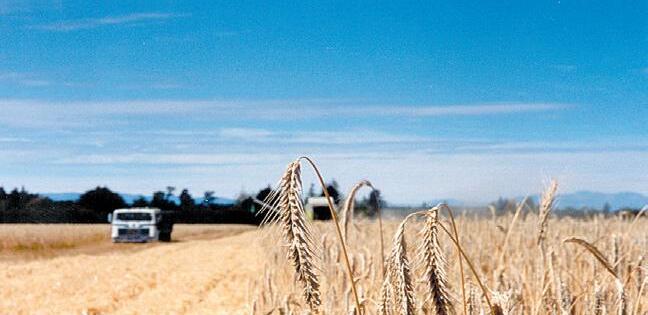








Farmer led charity Meat the Need has expanded its offerings thanks to a new partnership in Canterbury, which will help provide food banks with a different source of homegrown New Zealand protein from the paddock to the plate.
] by Erin Speedy
Patoa Farms in North Canterbury has officially come on board, generously donating one pig a week to supply the region’s food banks and community organisations.
Meat the Need and Feed Out General Manager Zellara Holden said the generous partnership from the free farmed family business also means Meat the Need could supply more food banks in the region.
“It’s truly exciting to be able to introduce a new line of protein for those facing food insecurity in the North Canterbury region, especially when it’s grown straight in their backyard and donated from a local farmer,” Holden said.
“This partnership is a testament to the generosity and dedication of our farming community. As a charity, we’re dedicated to connecting local farmers with their local communities.
“At the end of the day, it’s clear just how much our farmers care about giving back and nourishing New Zealanders in need.”
Patoa Farms wholesale and procurement manager, Jelle Edzes said they were honoured to be able to donate.
“Often it is more of a blessing to be able to give, than to receive a gift and in this case, we feel that way. It causes us to reflect on everything we have and be thankful,” Edzes said.
“One of Patoa’s core values is to be a blessing to its people and local community. Meat the Need fits the criteria for caring for those in need in our community and we were keen to see pork distributed alongside the other proteins Meat the Need makes available.”
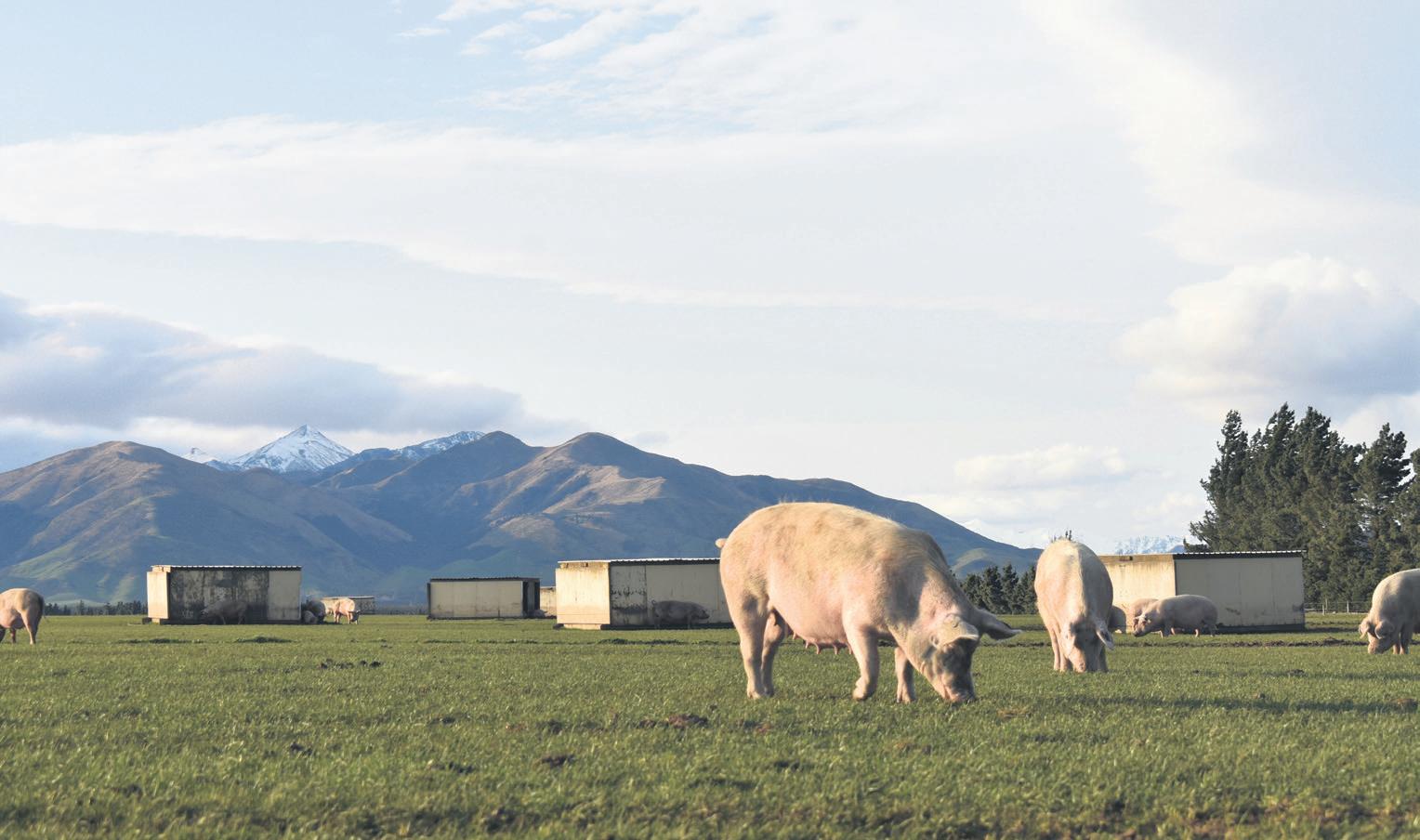
Edzes said he was very proud of all those who have made the distribution possible from Patoa Farms, Harris Farms and Meat the Need.
“Nutrition is vitally important and meat protein is essential to our nutritional needs. By providing easy to prepare pork to food

banks via Meat the Need, we know we can alleviate the pressures on those in our local community who need help.
“By providing a consistent supply of pork, we can help food banks do what they do best, and through that we can all work together to help our community thrive.”
Farmer led charity Meat the Need and Feed Out facilitate donations of meat and milk to supply to over 110 food banks and community organisations across the country with support from processors Silver Fern Farms, Miraka and Fonterra.

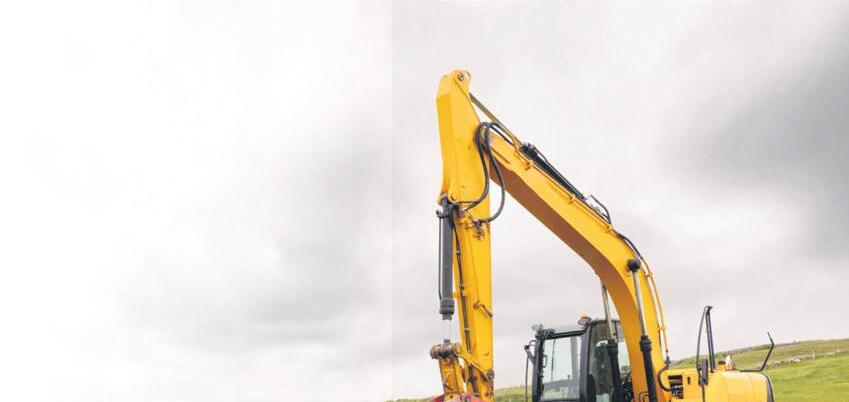








Recently it was Mental Health Awareness Week. Mental health is a significant challenge for rural New Zealand and a priority focus of this Government.
We’re moving fast to roll out support across the country that will equip and empower rural New Zealand to deliver effective and meaningful mental health support locally.
We are also in the thick of the calving and lambing seasons—a critically important and busy time for farmers and rural communities. It has been a challenging season against the backdrop of tough economic conditions, with low commodity prices, high inflation, high interest rates, and adverse weather conditions.
Adding to challenging weather and economic conditions, the previous Labour Government spent far too much effort, and money, imposing burdensome and impractical rules on farmers and growers.
Our Government is determined to put a stop to it and ensure that the regulatory environment balances our international obligations while allowing farmers to do what they do best-produce the high quality, safe food that the world needs.
While Mental Health Awareness Week is an annual campaign, it is also a gentle re-
minder to us all to prioritise and take care of our mental health beyond this week itself.
The 2024 Theme is “Community is... what we create together”. After Cyclone Gabrielle, the Mental Health Foundation commissioned research to understand how severe weather events impacted people’s wellbeing. They reported back that their research showed that having strong and empowered communities is the key to getting through tough times.
This Government is concerned that rural communities are often underserved by the health system, facing higher barriers to access services. Even though in New Zealand, one in five people (19%) live in rural communities, to date your needs have often been underserved, with health and mental health outcomes not adequately monitored by the government agencies.
This Government has committed to prioritise increasing access to mental health and addiction support, growing the mental health and addiction workforce, strengthening the focus on prevention and early intervention,
and improving the effectiveness of mental health and addiction support.
Through Budget 2024, we announced $24 million over four years for Gumboot Friday. A grassroots charity which, like our Government, is focussed on outcomes rather than process. The funding enables Gumboot Friday to give more than 15,000 young New Zealanders access to free mental health counselling services each year.
In July, Mental Health Minister Matt Doocey launched a $10 million Mental Health and Addiction Community Sector Innovation Fund. The Fund is designed to support community organisations and innovative initiatives that are focussed on increasing access to better mental health support.
Minister Doocey has also announced his five mental health targets and begun consultation on the Government’s Suicide Prevention Action Plan 2025-2029. I encourage you to have your say, submissions close on 1 November.
We have boosted the funding to $767,000
a year for Rural Support Trusts, to provide more help to farmers and growers under pressure. A recognition of the critical role these trusts play in your communities to deliver free and confidential assistance to farmers and growers facing personal, financial, or climate-related challenges.
Providing funding for mental health support is one tool in our belt. The other is to cut red tape and design a common-sense system that means less time in the office, and more time out on the farm, and with family and friends.
Despite the tough conditions in the regions, it’s encouraging to see a recent sense of optimism and ‘green shoots’ being reported across the sector. Rabobank’s Rural Confidence Survey highlighted confidence in the sector for the first time since late 2021.
In the spirit of Mental Health Awareness Week 2024, I encourage you to pick up the phone to a friend or neighbour, share a meal and a laugh, and let those around you know that you are there for them.







A farmer support group calling themselves “lean on a gate and talk to a mate” are about to expand, but they need your help.
Craig ‘Wiggy’ Wiggins realised just how isolated farmers were during the covid lockdowns.
Being totally isolated geographically, the ban on anyone coming onto the property simply intensified the loneliness that not talking to others can produce.
With an emphasis on talking to your neighbours and those you do business with it has been an uphill battle for the small group who are running the support programme to get their word out.
A recent act of charity has prompted an expansion in their thinking.
With that success it has been agreed that
the “lean on a gate” concept could be a lot more effective if there were more funds to get the word out.
At present the whole concept is funded by the small group who are running it.
Costs include advertising material, speaking engagements and any administration.
“Donate for a mate” is a website that enables people to donate to help those in need of support mentally.
Farmers are the second highest category when it comes to suicide, now known as accidental death, to hide the figures.
It is well recognised that those suffering from mental health problems are very good at hiding the symptoms, and certainly won’t
talk about being depressed. Those who have considered taking their own lives will admit that they became a mental passenger, and the heads took over from reality.
They certainly don’t consider the effect it will have on the family and in rural cases, the operation.
To a degree it is up to family and friends to look for symptoms such as they go quiet, seem to spend more and more time alone, stopping going to meetings and even eating less.
To be a mate means to be there for your mates, perhaps this is the catalyst for all the farming mates to close ranks and donate for their mates and other folks’ mates.
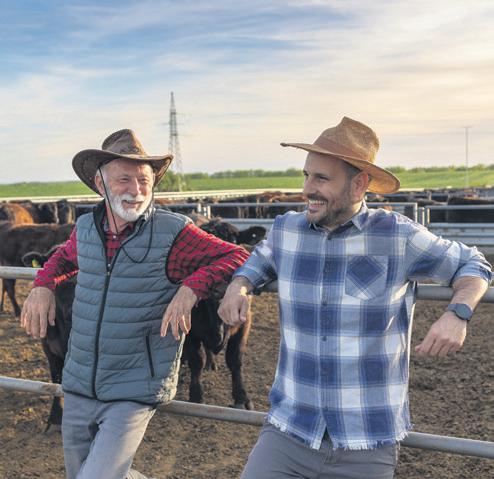

With the theme of this year’s show being ‘Beef and Wool/Miti me te huruhuru’, the Ellesmere A&P Association will be demonstrating the many different facets of the beef and wool industries and their contribution to the local, regional and national economy at the annual show.
This year’s show will be held on Saturday, October 19 at the Leeston Showgrounds.
This year the Show President is Ian Fleming, a Red Poll beef breeder, cross-bred wool producer and farmer from Irwell. He and his family are intergenerational farmers and have enjoyed the challenges over the years of producing high quality beef breeds and product.
Fleming is enthusiastic about the highclass beef and wool products this country is known for and how it supports factories, transport, exporters, local retail and hospitality; both locally and from overseas with a flow on effect of supporting local economies and communities.
“We are lucky to live in a country where our farmers are regarded as being the best in the world at what they do and the product they provide at national and international levels. This includes having textiles and meat renown worldwide for its high quality and ethical production regimes.”
Show Day is the culmination of months of planning that ends in local, regional, and even international competitions. Events like wood chopping, shearing, highland dancing, and equestrian can all contribute to an individual’s overall points for the competitive year.
“It’s not only our competitive sections that make show day what it is, we also have some great local entertainment, excellent hospitality, fantastic retail stalls, local and regional trade exhibitors, and a large side show alley.”
The Ellesmere A&P Show will also host the NZ Young Farmer of the Year District Finals for the Tasman region. This event marks a significant milestone in the journey to finding New Zealand’s top young farmer.
Contestants from across the Tasman region, which spans from Dunsandel to the top of the South Island and across to the West Coast, will converge to test their knowledge and demonstrate their agricultural prowess.
The Ellesmere Show will also hold its inaugural Down to the Wire fencing competition.
The competition will feature eight skilled teams of contractors, who will battle it out in a test of speed and precision.
Each team will have just three hours, from 11:30 am to 2:30 pm, to construct a complete fence and a gate, demonstrating their expertise and efficiency in this crucial agricultural skill.
In addition to the professional competition, the show will also host a Youth Fencing Competition. Eight high school teams from the district and beyond will compete from 8:30 am to 11:00 am.
This event offers an opportunity for young, aspiring fencers to showcase their talents, foster teamwork, and gain valuable experience in a competitive environment.
There’s also plenty for those with an artistic or musical bent with Selwyn’s Got Talent, Selwyn’s Got Rock, and the Wearable Arts competition running throughout the day.
The Wearable Arts competition is a fashion show not to be missed and is a mainstay

competition. Many excellent artist fashions have been created over the years and is a real crowd puller for the Show each year.
This year’s Show theme is ‘Beef and Wool – Miti me te huruhuru’ and there are many
age group and design classes to enter in around this theme.
Show details and entry information can be found at Show website: www.ellesmereshow.co.nz.
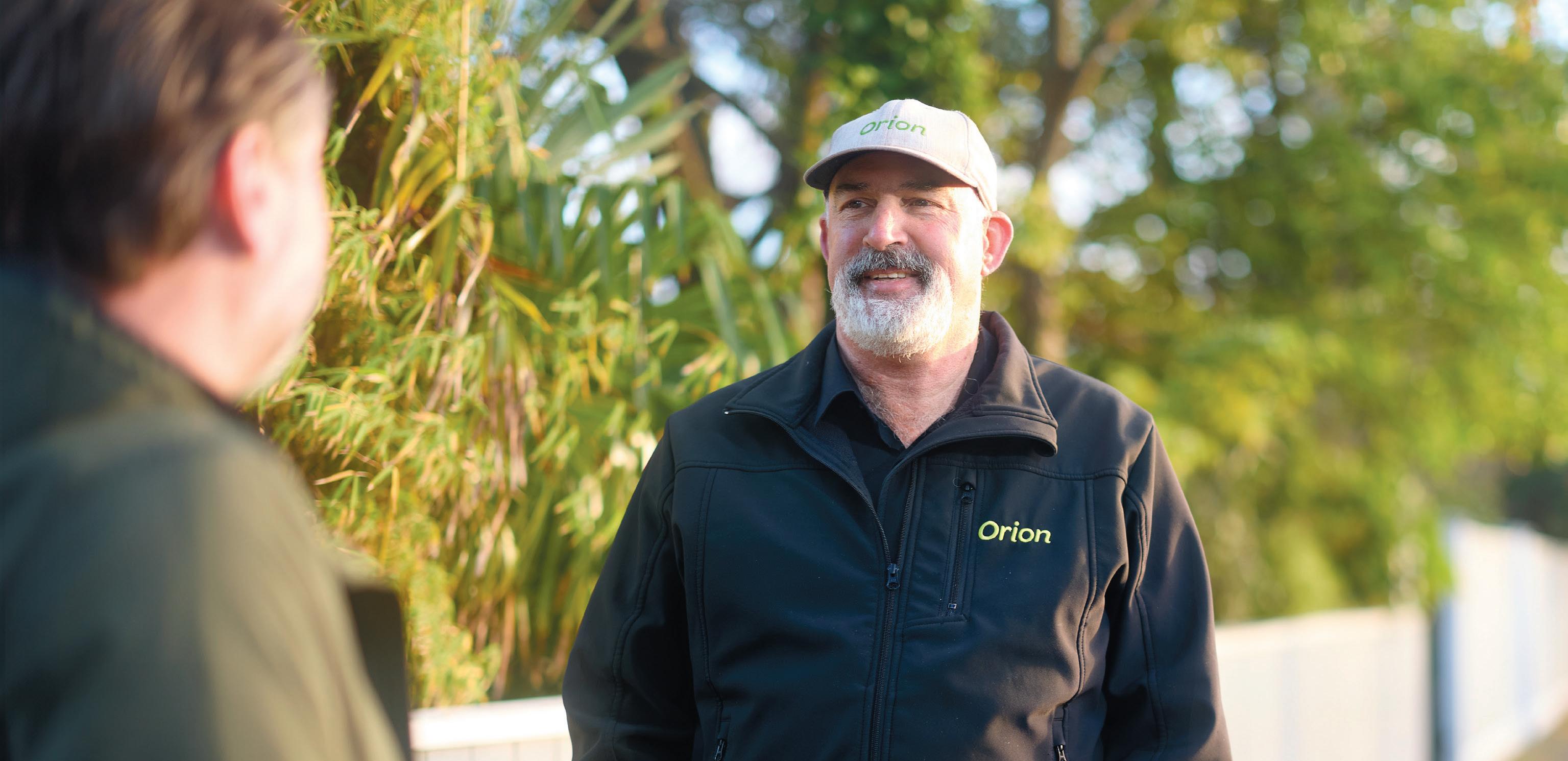


Vegetation falling on lines is one of the leading causes of power outages on our network. Visit oriongroup.co.nz/trees for tree regulations, advice and to find out about your responsibilities as a property owner.
We recommend using trained professionals and if you have any questions, call us anytime on 0800 363 9898. We’re here to help.










There’s an irony in the fact National’s lack of climate action could end up in more of a proliferation of permanent forests.
They’ve cancelled almost every climate policy brought in by the Labour Government, including significant policies across the transport and industrial sectors that were helping to take the pressure off farming.
The result could be more farm conversions and further decimation of our rural communities – and I’ll explain why.
Small communities up and down New Zealand’s have watched as previously productive farmland has been turned to permanent forests. They will tell you that the result is people moving away, local schools and stores closing, and a real toll on mental health and wellbeing.
The reasons for this weren’t the billion
trees programme which encouraged planting on unproductive land, or changes to the Overseas Investment Office rules to encourage international investment in production forests. It was the high price of carbon credits through the Emissions Trading Scheme, which made turning farms into forests more bang for buck and less effort than farming.
The National Party has made it clear that their plan is to simply rely on the Emissions Trading Scheme to meet New Zealand’s climate goals.
The Emissions Trading Scheme is what drives the planting of permanent forests for carbon capture, because when the price of carbon credits is good, there’s more money in trees.
Last month a report called ‘Why Pines?’ by Our Land and Water displayed a startling
future for rural communities in New Zealand, foreseeing that ‘it will remove families and jobs from communities, leading to future depopulation and the loss of rural schools and community organisations.’
Modelling in the report estimated that around half of sheep and beef farm area will be replaced by forestry by 2050, and the 2023 Rural Decision Makers survey showing that forestry for carbon was the most popular new land use within the last 10 years.
In 2020, Labour was the only party to listen to farmers and have a policy on this issue. We made changes which gave local communities a say on whether a farm-to-forest conversion could go ahead – the test being whether the right tree was in the right place.
But now, even the future of that policy is
unclear, with the National Government saying they’ll tear up Labour’s Resource Management Act changes.
We don’t want to go back to a scenario where farmers are converting their land to permanent forests because there’s more money in it.
Nobody can blame farmers for making that decision, they’re doing it because the settings aren’t right and the government isn’t doing enough to offset emissions elsewhere.
We have a long way to go to solve climate challenges, and Labour didn’t always get it right. But they aren’t going to go away by ignoring them either.
These are long-term issues that have long-term consequences, and it’s time that National started taking them seriously and coming up with solutions before it’s too late.





In response to the strong public movement in the late 1990s and early 2000s, a rigorous regulatory regime for genetically modified organisms (GMOs) was implemented that has kept New Zealand as a farming nation without any commercial production of genetically modified (GM) plants or animals.
ease, its release into the environment poses unique risks with potentially irreversible impacts.
The Luxon Government has stated its intent to effectively give up that GM-free producer status, without public discourse.
It begs the questions: how much has our precautionary approach to GMOs advantaged us, has it harmed us, and how should we proceed?
In the past 30 years of commercial production of GM crops globally, neither the promise of monumental benefits nor the prediction of catastrophic harms from GM have borne out. We need a sober evidence-based approach to how and when we use gene technologies.
The Government’s hyperbolic promise of untold riches and tech-fixes for all the world’s woes are neither accurate nor helpful.
While genetic science is highly valuable for understanding nature, producing medicines, and improving our responses to dis-
The most widely grown herbicide tolerant GM agricultural crops have spawned significant problems. Originally developed by Monsanto, Roundup Ready crops have led to huge increases in toxic chemical use in the US, the creation of superweeds, and no particular benefit to yields, farmers, or consumers, but plenty of profits for the herbicide industry.
New Zealand has, so far, been spared these unwanted consequences through our precautionary approach.
Precision fermentation is one form of contained GM that offers potential for what are known as “nature-identical” ingredients such as whey. These are both an opportunity for less polluting more humane methods of food production but also a competitor with natural foods.
New synthetic foods may become a major threat to conventional farming. Ironically, per-
haps the best defence against lab-produced GM foods, is a solid reputation for producing natural food. Giving up our country-wide GMfree producer status would forfeit this distinct value.
When given the choice, most consumers globally continue to prefer non-GMO food. There’s a growing market for it in China and India – two countries of significant interest to our producers.
It would be irresponsible to ignore the value of being able to confidently market our produce as non-GMO, as Fonterra has already done in the US.
There’s a hollow sound to the Government claiming GM as a climate change solution while they willingly ransack protections for nature, cut funding to climate initiatives, and open up coal mining.
Politicians tout silver-bullet ideas like low methane GM ryegrass, but this may be a blunt, single trait, proprietary crop with unproven efficacy.
Whereas actual success in reducing emis-
sions are being made with land-use change, diverse pastures and a focus on soil health and reduced fertiliser inputs that accounts for the complexity of whole farming systems and local conditions.
The right of farmers to maintain their current non-GMO status must be protected. Once the gene(-ie) is out of the bottle, problems can grow beyond our control. Anyone who has dealt with unwanted Kikuyu grass knows that once released, grass species’ spread far and wide.
The ability to alter life directly at the genetic level is powerful. That’s exactly why the use of genetic technology and knowledge must be approached ethically and cautiously. Obligations to uphold Maori rights in regard to native flora, fauna, and knowledge are also essential.
The Government’s intention to remove ethics and precaution from GM laws is a radical step away from the wisdom of the 2001 Royal Commission on Genetic Modification’s advice that we should, “proceed with caution.”



The outlook for dairy farms this season is better than anticipated, as emphasised in the latest DairyNZ Econ Tracker update.
] Article supplied by ]
DairyNZ
DairyNZ’s head of economics, Mark Storey, said in the previous June 2024 Econ Tracker forecast update, DairyNZ predicted a relatively challenging season ahead due to high expenses, however, conditions seem to be improving.
“In the past few weeks, we have seen the combination of declining interest rates, and improved farmgate milk prices, which creates a more favourable outlook for New Zealand dairy farmers,” Storey said.
“These changes are likely to provide dairy farmers with greater financial flexibility than initially projected for the 2024/25 season.”
Prior to these announcements, DairyNZ’s latest Farmer Perceptions survey already showed most farmers feel confident in the financial sustainability of their business, with 60% feeling very confident, while only 10% feel less confident.
“Many farmers will continue to feel relief following these recent announcements on the farmgate milk price and interest rates, having experienced several seasons with tight profit margins,” Storey said.
“Although, there is still a slight cash deficit on average for dairy farms which reflects that interest costs are still high.”
When considering these changes, DairyNZ’s latest farm financial forecast on the Econ Tracker shows the national breakeven forecast sitting at $8.09 per kg/MS, while the forecast average payout received has increased to $8.84 per kg/MS.
“We have seen farm working expenses increase slightly, driven by increases in key operational areas such as electricity, irrigation, wages, and repair and maintenance costs.

Positive: DairyNZ’s head of economics Mark Storey says declining interest rates, and improved farmgate milk prices, are creating a more favourable outlook for New Zealand dairy farmers.
Although the reduction in interest and increase in farmgate milk price significantly outweigh these minor increases, improving the overall financial position of most farmers.”
Storey said with a lot of attention around the interest rate changes in recent months, the September 2024 quarterly update of the Econ Tracker provides a deeper analysis into what interest rate changes and timings could mean for dairy farmers this season.
“The alternative scenarios we explore show how the timing of interest rate reduc-




tions can influence the discretionary cash position of farmers. We see clearly that earlier rate cuts would result in greater cost savings and a stronger cash position, compared to reductions made later in the season.”
The new forecasts are published on the DairyNZ Econ Tracker and expressed as national or regional averages, which does not necessarily reflect individual farm situations. A quarterly update, on this occasion focused on interest rates, is also available. The Econ Tracker can be accessed at dairynz.co.nz/ econtracker.









‘there is still a slight cash deficit which reflects that interest costs are still high.
Our portfolio of powerful, proven products has helped farmers from one end of the country to the other create and maintain thriving businesses, and has earned us a reputation as New Zealand’s arable protection specialists.
Our suite of innovative crop protection solutions provide local farmers with everything they need to win the war on weeds, pests and diseases. Visit corteva.co.nz to view our range of online arable resources.









In New Zealand, the equity market, which has long been in the doldrums, saw a spark, with the S&P/NZX 50 gaining nearly 6% for the month of July.
Takeover activity, along with rising expectations of the Reserve Bank of New Zealand (RBNZ) interest rate cuts, provided a boost.
However, while the market did welcome the rate cuts when they arrived, the recent company reporting season has tempered some of the enthusiasm.
Companies continue to highlight a difficult operating environment, and, while lower interest rates are helpful, it will take time for these to flow through to improved economic activity.
The New Zealand economy is in a considerable slump. While headline economic growth in the March quarter saw a modest economic expansion of 0.3% year-on-year, per capita growth paints a grimmer picture, with a decline of 2.4% year-on-year.
More timely data suggests that economic activity fell through the June and September quarters, which would put New Zealand
back into a technical recession (when economic growth falls for two consecutive quarters) for the third time in two years.
Business insolvencies are rising and many households are struggling to keep up with debt payments. The New Zealand labour market continues to weaken and the unemployment rate rose to 4.6% as at June 2024, and is expected to rise to around 5.5% in the year ahead.
Headline inflation dropped back to 3.3% year-on-year in June 2024, and is highly likely to fall further in coming quarters.
With future inflation appearing more manageable, the RBNZ cut the Official Cash Rate (OCR) down from 5.50% to 5.25% in August, and has signalled further interest rate cuts from here. Interest rate markets are pricing in an OCR around 3% by the end of 2025.
Bank mortgage and deposit rates have already shifted meaningfully lower. While in recent years favourable interest rates on term deposits and savings accounts have encouraged some to park their money in the bank, the environment is now turning.
As interest rates decline, keeping funds in

When you are thinking about your investment options, talk to Forsyth Barr
To get personalised investment advice and portfolio management specific to your investing needs, talk to Investment Adviser Andrew Wyllie in confidence on (03) 365 4244 or email andrew.wyllie@forsythbarr.co.nz
the bank will soon become less appealing. If you have cash sitting in on-call or short-dated term deposits, this could be the time to consider alternative options.
While equity markets have experienced more volatility in recent months, the odd bump in the road is entirely normal, and shouldn’t concern investors who have a long-term focus.
In the months ahead, we could see the US election add to this volatility. During these periods of heightened political focus, markets typically tend to overemphasise the importance of politics on the market’s performance over the long term.
But it’s worth remembering that, historically, markets have done well under both Republican and Democrat leadership, including the last eight years under both Presidents Trump and Biden.
Moving your portfolio around in response to media headlines is almost always detrimental to your wealth. Beyond the noise, we expect an environment of a robust US economy, declining inflation, falling interest rates,








‘Moving
your portfolio around in response to media headlines is almost always detrimental to your wealth.
and (hopefully) an improving outlook in Europe, New Zealand, and elsewhere, to be a constructive outlook for investors.
This article was prepared as at 31 August 2024 and provides market commentary for the three-month period ending on that date. To discuss your investment options please contact Andrew Wyllie, who is an Investment Adviser and Forsyth Barr’s Christchurch Manager. Andrew can be contacted regarding portfolio management, fixed interest, or share investments on 0800 367 227 or andrew.wyllie@forsythbarr.co.nz. This column is general in nature, has been prepared in good faith based on information obtained from sources believed to be reliable and accurate, and should not be regarded as financial advice.








At the heart of the reform was the centralisation and consolidation of the entities that provide water services in New Zealand, so that the sixty-seven different (largely council owned) entities providing water services would be restructured into four new entities.
Each new entity would cover the area of various different councils and would be governed by a board (or boards) appointed by the interested local councils and by local iwi.
The two goals of the reform were to enable greater investment in aging water infrastructure nationally, and to promote co-governance with iwi. Legislation implementing the three waters reform was enacted throughout 2022 and 2023 and had begun to be implemented this year.
On 16 February of this year, the Nationalled Government passed the Water Services Acts Repeal Act 2024 (Repeal Act), which repealed much of the water services legislation enacted by the previous Government.
The effect of the Repeal Act was to repeal
all legislation relating to water services entities and to reinstate previous legislation related to the provision of water services (including local government legislation).
The Repeal Act essentially reversed the previous Government’s three waters policy.
Fast forwarding to 2 September of this year, the Government has now passed the Local Government (Water Services Preliminary Arrangements) Act 2024 (the Act).
The Act is intended to implement what the Government calls the ‘Local Water Done Well Framework’ which aims to set up a process of consultation that is conducive to local councils preparing an “effective strategy” to continue managing their individual water
services assets and infrastructure. Some key elements of the Act include:
• The requirement for councils to develop “Water Services Delivery Plans” (“Plans”) by 3 September 2025.
• Plans must outline future water services delivery arrangements, and councils must commit to an implementation plan.
• Councils need to include in their Plans baseline information about their water services operations, assets, revenue, expenditure, pricing, and projected capital expenditure, as well as necessary financing arrangements, as a first step towards future economic regulation.
• A streamlined process for consultation of



In July 2020, the previous Government introduced the Water Services Bill, effectively launching its reform of the way water services and infrastructure are provided in New Zealand, commonly referred to as ‘three waters’ (i.e. drinking water, storm water and wastewater).
interested parties and decision-making, with regard to a council’s obligations under the Local Government Act 2002 (specifically in relation to the setting up of future water services arrangements and infrastructure).
The final element of the Local Water Done Well policy, is to introduce a third piece of legislation (in December of this year), that establishes new long-term rules and regulations around the supply of water services in New Zealand. Presumably this new legislation would incorporate some of the solutions proposed during the consultation process carried out under the Act.
Watch this space.



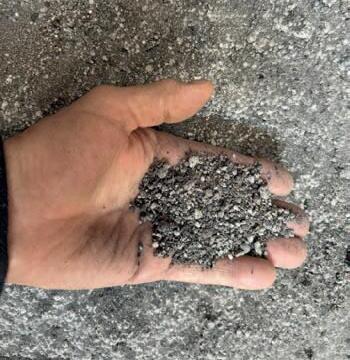







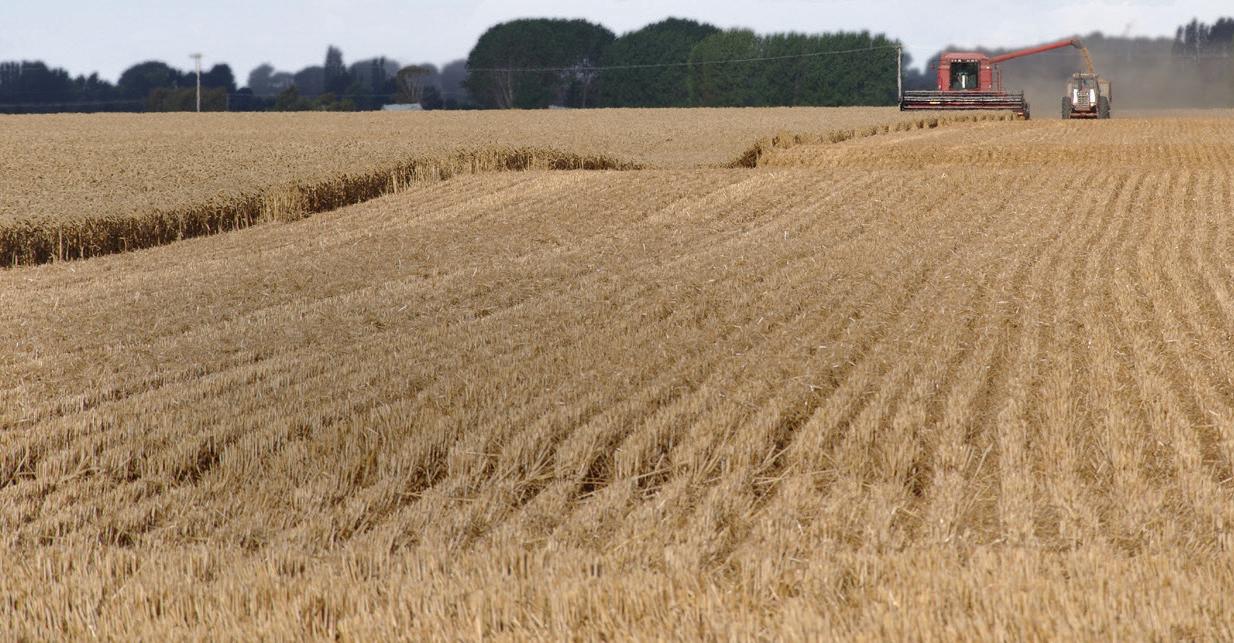



























You have been diagnosed with osteoarthritis. This means you have joined one of, if not the largest health problem clubs.
My client files are full of testimonies from people who have had significant reductions in pain and improvements in mobility.
Likely you have seen your GP who may have arranged X rays to confirm that you have cartilage loss as evidenced by reduction in the spaces between bones of joints.
There may also be degenerative changes to these bones. You may have been referred to an Orthopaedic specialist who may have outlined surgical options.
Medicine has essentially three options for osteoarthritis (OA): pain relief, physiotherapy, or surgery. However, nutritional therapy based on quality, professionally prescribed supplements and anti-inflammatory diets can make a significant different.
Let’s give your OA symptoms a score of 10/10 discomfort. What would your life be like if this reduced to 5/10 or even 2/10?
I recently caught up with a client with significant knee pain from osteoarthritis. The worst part was the pain at night. He now reports the pain at night has gone and are significantly better during the day. He has gone from 10/10 to around 2/10.
The question is whether we are willing to try something different.
There is the cost barrier. Fortunately, a quality Joint supplement with Omega 3 Fish oil is about $40 a month, more in the initial intensive period. Adopting an anti-inflammatory diet will possibly mean some extra costs









but it is hard to put a price on our health. However, in my experience the biggest barrier is simply we are creatures of habit and naturally resist change. Feel free to request an emailed copy of my Osteoarthritis programme.



$99.95 for 3 bottles free freight or 1 bottle for $36.95 plus $5.99 postage
60 Capsules per Bottle
• Bettaflex is a joint support formula to promote healthy joint cartilage function.
• Bettaflex has 400mg (per capsule) of high-grade avian chondroitin, 400mg of glucosamine and 100mg of BioSolve® bioavailable Curcumin (from turmeric).
• Try Bettaflex for 3 months and see for yourself.
How can Bettaflex help?
• Chondroitin and glucosamine are building blocks of cartilage.
• Supplementation with correct levels can support healthy cartilage function and cartilage repair processes.
• New BioSolve® bioavailable curcumin helps joint function while gentle on the stomach.
• Research indicates that chondroitin is highly effective at 800mg daily.
John Arts comments:
“My latest Bettaflex formula includes BioSolve® bioavailable curcumin for faster results. The normal dose is 2 capsules daily but I recommend an initial higher dose for 1-3 bottles to saturate joint tissue.”
]
Cost-benefit analysis is a daily part of farming and growing. You have to get a return on investment or it’s not worth doing. Graham Greer of Greer Groundspraying Ltd agrees.
Advertorial supplied by UPL NZ Ltd
While he finds there’s sometimes a reluctance for farmers to include adjuvants in their programmes, he believes they’re worth it.
Actives generally get all the credit, but adjuvants enhance efficacy and efficiency, by getting spray to, on, and into their target – reducing risk, and wringing the last cent out of the spray’s value. Little or nothing is wasted.
Managing drift is something Cantabrians will relate to and it’s a challenge for Graham (in Marton) as well. “Where we are here, it can get pretty windy.”
“Using Li-1000 can be the difference between being able to do the job and not.” He adds that they would never operate when conditions are too extreme or might impact nearby houses or other crops.
Li-1000 from adjuvant market leaders UPL NZ Ltd, (formerly Etec Crop Solutions) dramatically reduces off-target drift and increases leaf penetration and translocation throughout the plant, improving product performance.
Graham also uses super spreader DuWett.
“It means, we can go with lower water rates and get better coverage. You can actually see the difference Du-Wett coverage makes on the leaves. It’s especially good with insecticides in brassicas which are really hard to wet.”




At the end of the day, there’s one more adjuvant that comes into play.
Graham uses All Clear® 2X to clean and decontaminate gear. “It’s a critical part of the process. You get less residuals and fewer blockages.”
All Clear 2X spray tank cleaner and decontaminator removes even sticky products, such as carfentrazone and cleans everything from the tank to spray lines to nozzles. It also has the benefit of increasing gear longevity and performance.
Longevity and performance are things Graham knows all about.
Graham’s father was a farmer and a hay and silage contractor. After leaving school,

Graham too worked on farms and driving trucks and diggers, then in a contracting business. 20 years later, in 2002, he went out on his own.
Graham’s business serves the wider Manawatu-Whanganui area (roughly in a 50 km radius of their base). The area is largely mixed cropping, beef, dairy and sheep.
The company works across crops including maize, barley and wheat, plantain, chicory, brassicas, and grasses; and applies insecticides, fungicides, and herbicides as well as crop health products and growth regulators. “It’s a real mixed bag.”
Greer Groundspraying works year-round, employing 4 full-time staff and 5 at peak.
“The busiest time is September through February. “The rest of the year ticks along nicely. “
Graham says the company has both trucks and self-propelling machines, so can work with a larger variety of crops and taller crops, as well. “With the self-propelling machines, there’s more ground clearance.” Graham’s sons Issac and Hamish, work with him, and are currently gaining their CAA drone certification – another string to the thriving business’s bow.
For more information talk to your local technical specialist or contact David Lingan, UPL NZ Adjuvant Product Manager at 021 804 450.






























































































Even the most determined slugs are no match for Metarex Inov®. The leading slug and snail bait with its Colzactive technology is so attractive, slugs and snails actively prefer it to seedlings. Protect your crops with Metarex Inov
































The government’s decision to pause the rollout of Freshwater Farm Plans (FWFPs) until improvements are finalised may have left some farmers questioning their next steps.
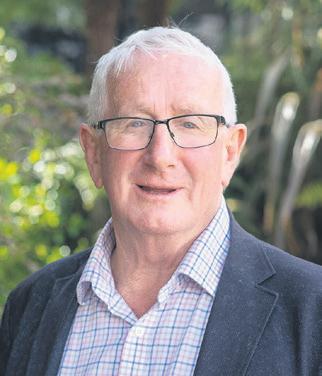

] by Peter Scott
ECan chair
Canterbury was set to be among the final regions to get FWFPs, in late 2025 – in part due to our existing Farm Environment Plan (FEP) system. With the rollout now halted, we are no longer working to this timeframe.
In the short term however, nothing changes for Canterbury farmers. The pause in FWFPs does not mean a pause in progress, nor does it mean that efforts to improve freshwater quality to date have been wasted.
Our farmers have made great strides in reducing nutrient and sediment losses to freshwater over the last decade, and while government regulations may change, the need to continue in the direction of minimising our impact on freshwater carries on.
As the government works to refine the FWFP system, Environment Canterbury –working with landowners – will continue to focus on achieving our regional freshwater goals.
FEPs will remain a cornerstone of Canterbury’s commitment to these freshwater outcomes. The gains we’ve made in implementing FEPs have led to improvements in farming practices and have been instrumental in improving water quality across the region. We will therefore keep pushing ahead to enhance our current FEP framework, building on the hard work that’s already been done in this space.
Alongside this, our FWFP team will work with our mana whenua partners, as well as catchment groups, farmers and central government on how we’ll manage a smooth transition from FEPs to FWFPs for when the time comes.
It’s also important to note that the industry-agreed Good Management Practices (GMPs) for freshwater are still relevant, and farmers should be aiming for GMP and beyond. This will mean the farm will be well along the path to developing and following the provisions included in a FWFP when the requirements are eventually rolled out.
What you can expect from here is that central government will make minor amendments to the RMA to enable the pause. Environment Canterbury will stay close to officials as things progress.
We realise that uncertainty around the direction of important legislation is never ideal, but in this case, I’ll reiterate that for now nothing really changes.
Farmers with an FEP should make sure it’s up to date and be ready for their next audit, and resource consent holders should ensure they are able to demonstrate compli-




ance with their consent conditions at short notice.
Canterbury farmers and irrigation companies have led the way in implementing FEPs, and can be assured these efforts have not been in vain.
This ‘pause’ isn’t about a stop. It’s about pushing on with FEPs and fine-tuning ways to identify and manage freshwater risks.
The Farmers’ Hub section of our website is a great source of information on regulatory changes and what you need to do on your farm.
And as always, please feel free to contact me – email councillor.scott@ecan.govt.nz.



‘Farmers with an FEP should make sure it’s up to date and be ready for their next audit, and resource consent holders should ensure they are able to demonstrate compliance with their consent conditions at short notice.



































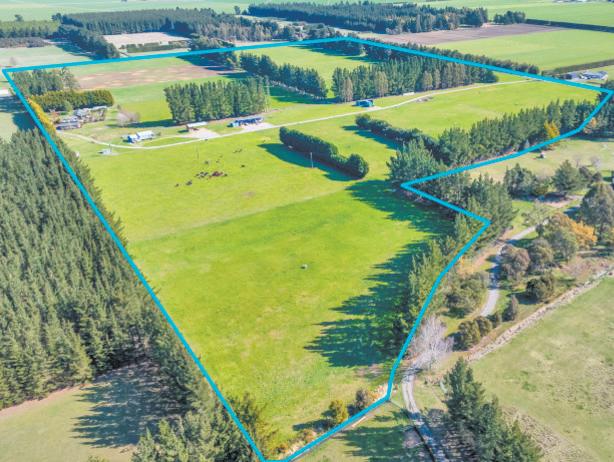




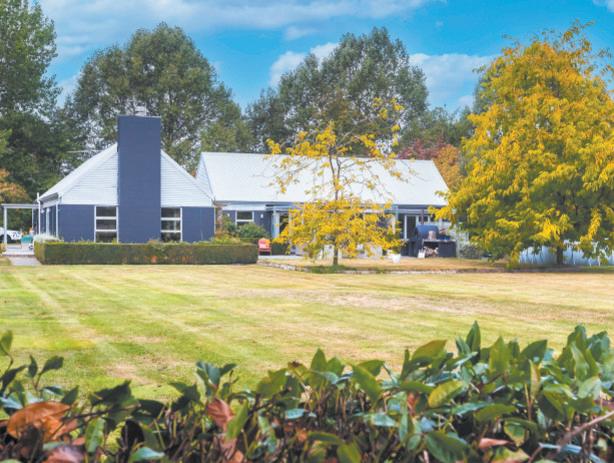





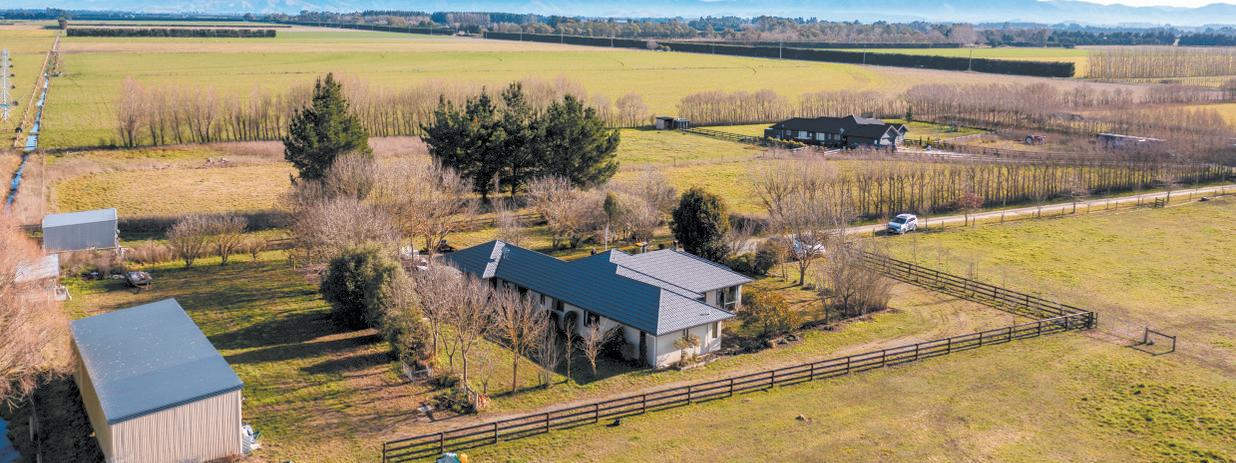













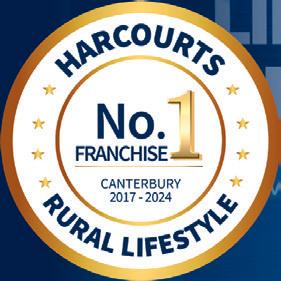












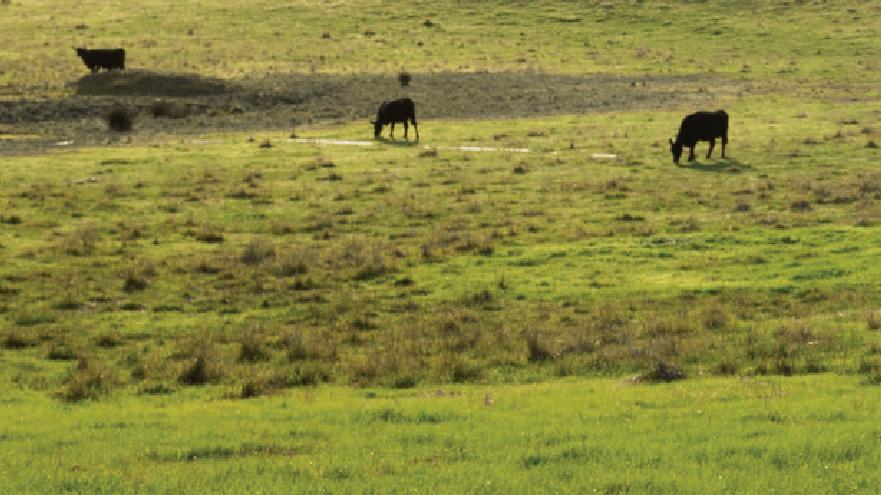













Potatoes New Zealand has launched a Sustainable Vegetable Systems tool aimed at enhancing sustainability practices within the vegetable farming industry.
The Sustainable Vegetable Systems (SVS) Tool is a nitrogen budgeting tool developed in collaboration with leading agricultural experts, environmental scientists and industry partners.
The tool aims to provide growers with comprehensive evidence-based decision support to optimise their nitrogen management.
Kate Trufitt, CEO of Potatoes New Zealand, said by utilising the tool, growers can reduce environmental impact, increase efficiency, and promote sustainable agricultural practices.
“The SVS Tool represents a significant advancement in our efforts to promote sustainable farming practices,” Trufitt said.
“By equipping our growers with cuttingedge technology and actionable insights, we are taking a major step towards a more sustainable and resilient agricultural future.”
The Sustainable Vegetable Systems project began in 2019, arising from the scarcity of data on vegetable nitrogen flows, particularly in crop rotation systems and a need to sustainably support growers.
Over a three-year period, nitrogen flow data rates using varieties of fertiliser was measured through a selection of representative vegetable crop rotations at Plant & Food Research sites in Lincoln and Hawke’s Bay. This work and data produced laid the foundation for the SVS tool.
These experiments were reproduced regionally across New Zealand with increasing engagement with growers to provide valuable insights into vegetable nitrogen optimisation. The project consolidated data from various
sources and stakeholders with key inputs from Plant & Food Research modellers, plant and soil scientists.
The SVS model was built to help support growers’ nitrogen use decision making through scientific knowledge, databased decision systems and practical support.
Plant & Food Research business manager Miriam Hall said the SVS tool is world leading modelling.
“Creating data-based decision modelling tools from collaboration with a variety of stakeholders is critical to support growers,”
Hall said.
Plant & Food Research are proud of being part of this project to help shape the New Zealand vegetable industry to a sustainable future.”
This is a highly collaborative project of key vegetable groups with an aim to develop a decision support tool using an integrated data set based on real world practices that are robust, trusted and reflect industry practice.
Andrew Barber, SVS programme manager, said the SVS Tool integrates nitrogen planning with soil testing, progressively overriding modelled predictions with measured results.
“The real time data and personalised guidance will help make more informed decisions, ultimately improving performance and reducing environmental impact.”
Key features of SVS:
• Real-Time Data Analysis: The tool offers real-time nutrient management decision making support for growers.
• Customised Support: Based on the data collected, the tool provides tailored guidance for nitrogen application.
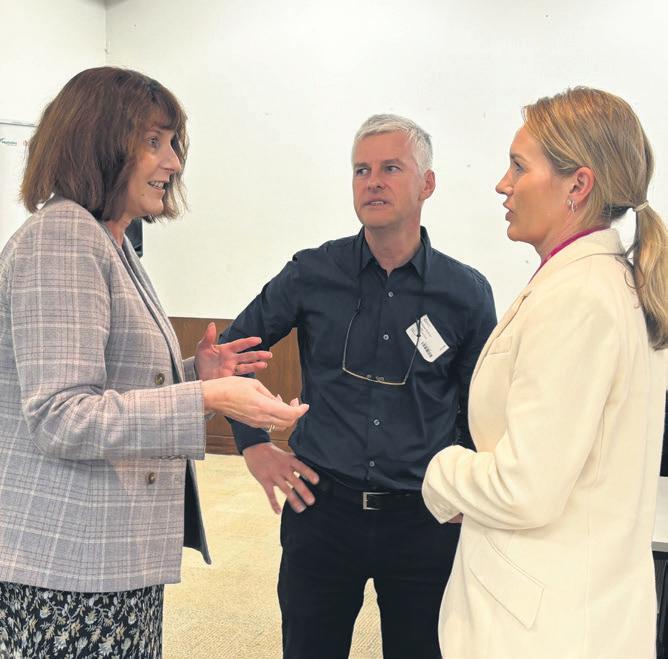
• Environmental Impact Reports: Farmers can generate detailed reports on their nitrogen practices, helping them meet sustainability goals and regulatory requirements.
Collaboration: Kate Trufitt, CEO of Potatoes New Zealand, SVS Programme Manager Andrew Barber and Associate Minister for Agriculture Nicola Grigg at the launch of PNZ’s Sustainable Vegetable Systems Tool in Lincoln.
• User-Friendly Interface: Designed with ease of use in mind, the tool is accessible to all fertiliser decision makers.
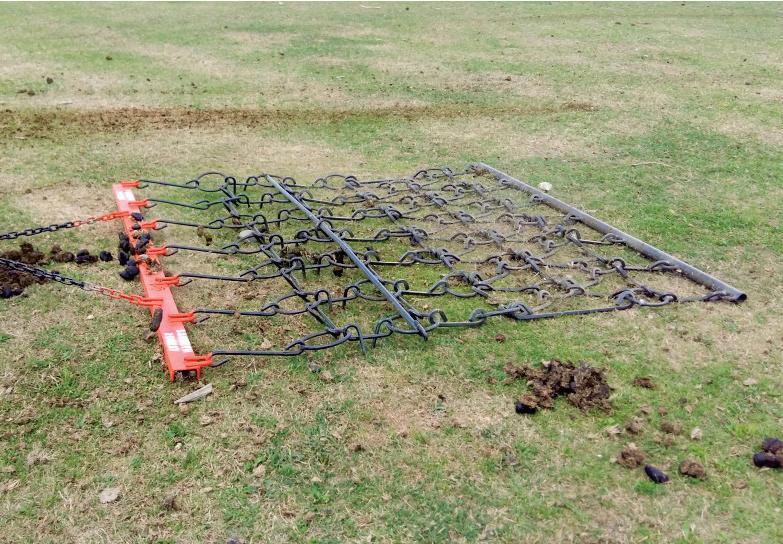

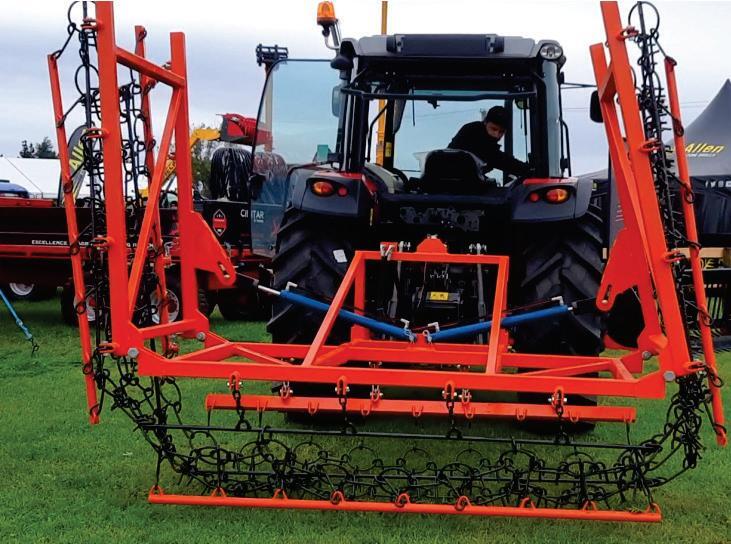

As its name suggests the Sumo Trio consists of 3 parts to help develop and create an ideal seed bed in all soil conditions.

First stage: Staggered row of subsoiler legs with a maximum working depth of 400mm.
(both hydraulic and shear pin protection systems available)
Secondary stage: Two rows of 500mm concave discs equipped with triple sealed bearings and Sumo’s famous double drive system giving unrivalled performance when working in adverse conditions.
Third stage: Sumo’s 760mm multipacker roller with replaceable shoulders leaves a weatherproof level finish in the most challenging soil conditions.
The Sumo Grassland subsoiler improves and revitalises compacted grassland that is suffering from the effects of continual livestock, rainfall and heavy machinery.
• Leading row of adjustable individually suspended discs allow minimum disturbance on the pasture surface.


• Hydraulic Subsoiler legs with working depths from 100-350mm to suit all types of compaction layer depths with quick change points.
• Rear flat packer roller with scrapers to leave an aerated consolidated level finish across the full working width.



Leading agri-tech company, Precision Farming, has launched its integration with John Deere Operations Centre™, connecting it to their platform as well as HawkEye and MyBallance to automate nutrient and spray record-keeping and Nitrogen Cap compliance for farmers.
This market leading integration streamlines farm management, eliminating manual reporting, and saving farmers and their partners’ valuable time.
Precision Farming COO Chloe Walker believes farmers need quick, easy access to accurate data when and where they need it.
“We are leading the way in application data connectivity to help farmers reduce paperwork and improve their nutrient management.
“It’s about saving farmers time, keeping costs down and improving sustainability outcomes. Our connection with John Deere Operations Centre is another crucial step towards providing farmers with the tools they need.”
Chloe also believes the connection brings together the strengths of all the partners involved.
“This integration merges John Deere Operations Centre’s advanced guidance technology, precision agriculture solutions and operational planning capabilities with Preci-
sion Farming’s automated nutrient management tools.
“Farmers can now easily connect their John Deere tractors to our platform, as well as MyBallance and HawkEye. This means they get real-time reporting, automated Proof of Application, nutrient heat mapping and simplified nitrogen cap compliance.”
Drummond & Etheridge Research & Development manager Paul Galletly says data from John Deere Operations Centre is essential to farmers as it saves them both time and money in their everyday operations.
“Having the connectivity to MyBallance and Hawkeye is a huge asset and will be a great benefit to both our customers and the environment.”
This collaboration helps farmers make data-driven decisions, save time, and contribute to better environmental outcomes eliminating the hassle of manual nutrient and N-cap reporting.
“Manual reporting is time-consuming and prone to inaccuracy,” Chloe explains.
“Automating this process saves time




Precision Farming COO Chloe Walker says farmers need quick, easy access to accurate data when and where they need it. Precision Farming’s connection with John Deere Operations Centre is a crucial step towards providing farmers with the tools they need.
and ensures accuracy. By connecting John Deere tractors to these platforms, farmers can ease their administrative burden and focus on what they do best – farming.”
Beyond the operational benefits, Chloe says this partnership represents a significant step towards more profitable and sustainable farming practices.
“Automating nutrient management makes it easier for New Zealand farmers to adopt world leading precision agriculture technologies. These technologies help to
make applications more accurate, reduces waste, and helps farmers meet environmental standards more effectively,” she says.
“With this new integration, we’re not just streamlining farm operations; we’re contributing to a more sustainable future for New Zealand agriculture.
“Using these technologies means farmers can be better equipped to apply nutrients responsibly and efficiently, ensuring compliance and supporting environmental goals.”




































New Holland has showcased its new-generation T4.120 F specialty tractor to customers at a special event in the South Island recently.
Article supplied by New Holland
The customer event was hosted by New Holland dealer Agricentre South in Cromwell, giving customers an opportunity for their first close-up look at the tractor, launched to the local market late last year and taking out the Best of Specialised title at the international Tractor of the Year 2023 Awards.
The tractor is the flagship of New Holland’s top-of-the-range premium specialty tractor offering, delivering a powerful performance up to 88kW/118 hp, and capable of meeting the multi-faceted hydraulic and engine power requirements for Power Take-Off (PTO) applications and multiple implement functions.
The specialised tractor is designed for viticulture and horticulture applications, with the Agricentre South event welcoming dozens of customers from vineyards across the region.
Richard Clapperton, Agricentre Group Sales Manager, said there’d been strong interest from local vineyard business owners, managers and operators, who were impressed by what they had seen.
“It’s a great addition to the range. Customers have been waiting to see an upgraded model in this range, and in that time the technology has moved ahead, we’re seeing some great updates in this new model.”
Clapperton said those who attended the customer day were particularly impressed with the improved operator comfort, ergonomics and visibility in the T4.120 F, appreciated

the introduction of a flat deck and features from the cabs of New Holland’s higher horsepower ranges, including the tractor functions now all being incorporated into the armrest.
“It’s easier to get in and out of and with the new armrest design, it’s a lot more user-friendly.”
He said the upgraded technology features had also attracted a lot of interest.
Features include:
A new VIS multi-functional display positioned above the dashboard, providing live information on the tractor and making it easy to set functions intuitively thanks to an encoder fit-
Upgrade: customers view New Holland’s next-generation T4.120 F specialty tractor at an unveiling event in Cromwell.
ted on the right-hand side trim;
The redesign of the cab’s Human Machine Interface, incorporating the most advanced New Holland features and ready to integrate the latest PLM systems and agriculture 4.0 technologies;
An optional suspended front axle to not only ensure a smooth ride but also retaining SuperSteer™ as standard with an effective
steering angle of 76 degrees, meaning the tractor can turn in a radius as low as 3.5m for achieving excellent tight turns;
A cab height is as low as 1920mm and the width at the top of the cab to 870mm, enabling the tractor to pass under the lowest branches in narrow groves without interfering with the valuable crop
The optional Blue Cab™ 4 system offers category 4 protection levels with enhanced filtration against dust, aerosols, and vapour;
The inclusion of Stage V emission standards, fuel tank capacity of up to 104 litres, and extended service intervals, making it more economical and productive;
Engine Speed Management (ESM) to precisely fuel the engine to meet prevailing loads and maintain a constant speed. This is ideal for duties that include spraying;
The ability to program ESM to ‘remember’ two engine speeds, allowing the operator to select separate speeds for work and turns at the end of a row. ESM can be easily varied by the operator in work, without complex settings.
For more information, contact your local New Holland dealer.
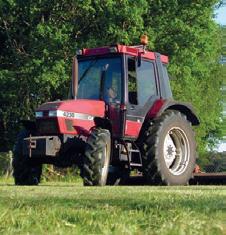












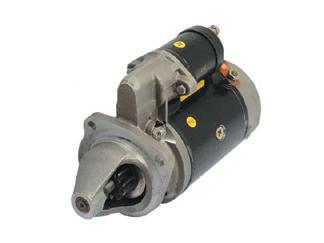





















































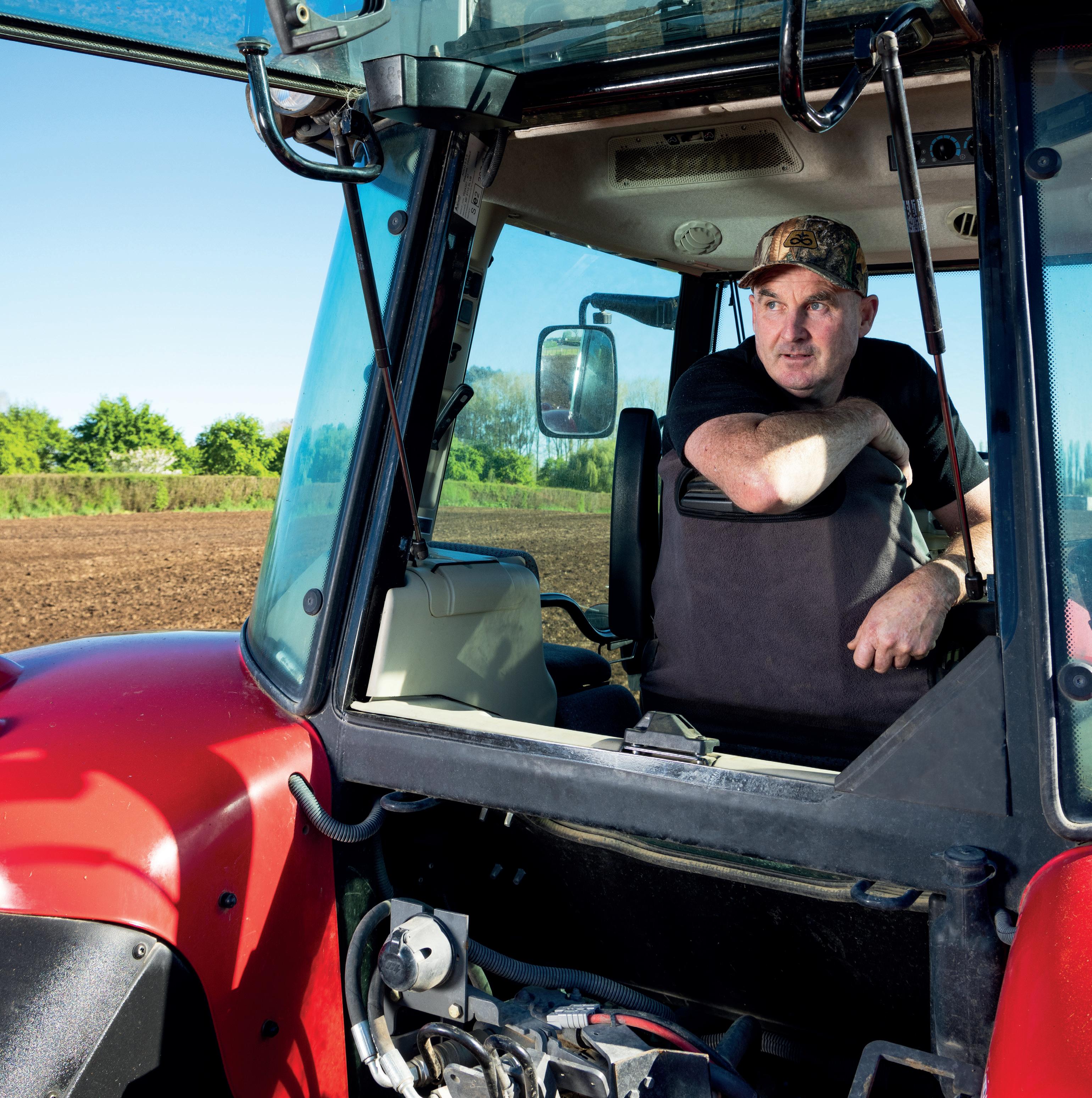

































Brassica seed crops can be a good little earner if they’re managed the right way.
] Advertorial supplied by UPL NZ Ltd
Getting both quality and quantity of seed is crucial, and the weather is not always on the grower’s side.
Shattering (shedding of seed) is a constant threat. This naturally occurring process is exacerbated by factors outside growers’ control, including rain followed by the dry heat, which is typical of our Canterbury summers. Even the vibration of harvesting equipment itself can take a toll.
Tom McDonald, Regional Manager Lower South Island for sustainable agricultural solutions provider UPL NZ Ltd, says brassica seeds are vulnerable to shattering from seed set right up until harvest.
“Seed losses due to pod shattering (shedding) are commonly 10-25%. But can be up to 70%.”
He says the UPL adjuvant, POD-LOCK, a pod protecting sealer, provides growers with two significant benefits.
“It makes sure you get the most from your yield, while limiting the “volunteer” population in the paddock the following season – you don’t want to compromise your next rotation.” He says that saves significant time and money for growers.
Anecdotally, Tom says, fewer seeds on the ground also means the crop is less attractive to birds, and pests.
Widely used by growers in the UK, Europe, North America, and Australia PODLOCK was launched to the New Zealand market ahead of the 2009/10 harvest. The innovative product is a unique latex polymer blend specifically developed to reduce the quantity of seed shed from seed pods, which split before and during harvest.
It works by forming a specialised, plia-
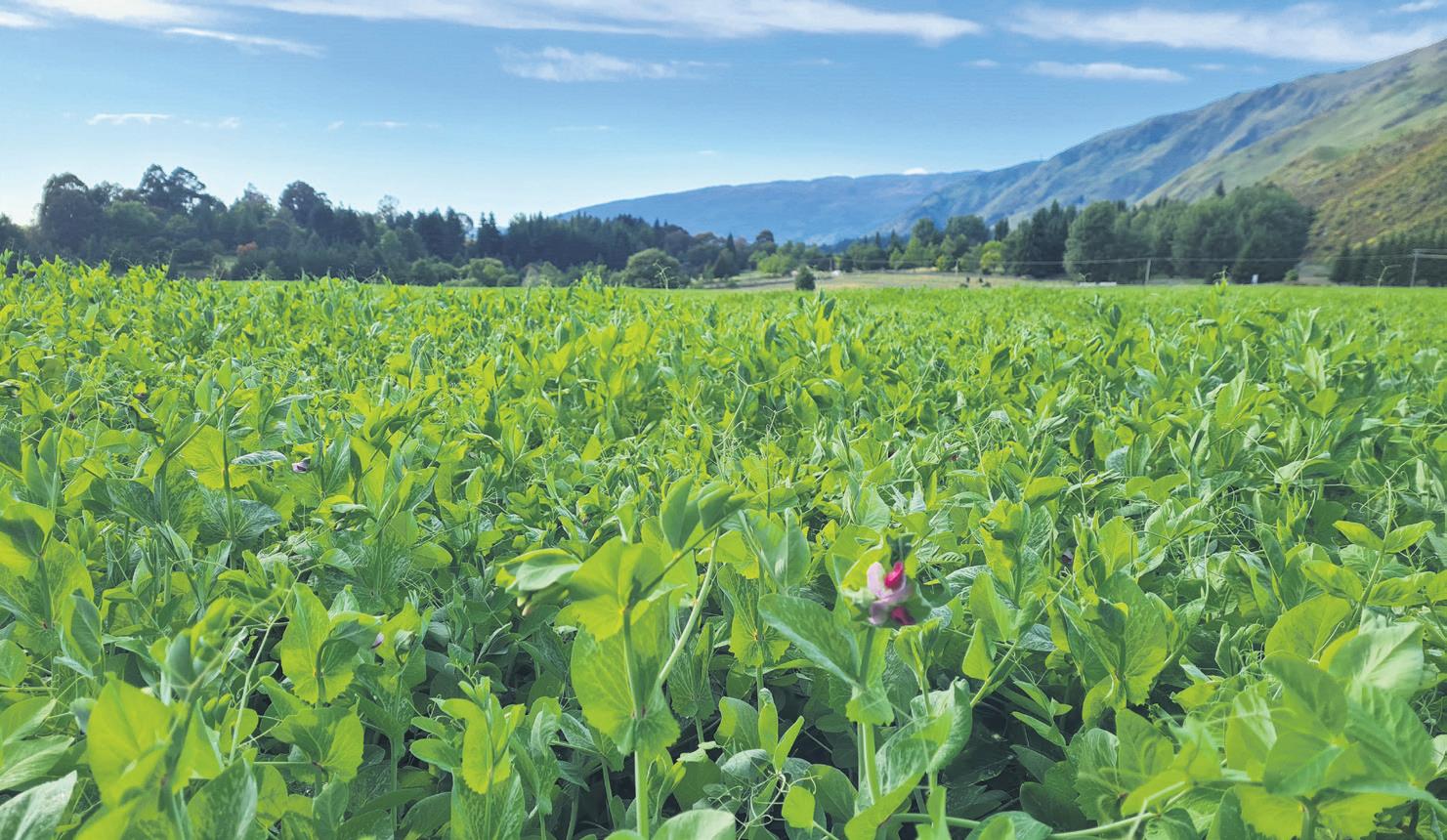

POD-LOCK prevents potential being lost and helps growers get the most from their yield.
ble netting that dries on the pod. This helps keep the pod intact and strengthens the pod wall. Tom says it’s essentially “next level care” for the seeds.
And Tom has a question for farmers contemplating using POD-LOCK on their crop.
“Why wouldn’t you?
“POD-LOCK is money really well spent. It’ll more than pay for itself, it’s the same insurance you get from using sprays or fer-



tiliser. Using POD-LOCK, you just don’t get those big seed losses. There’s a pretty solid ROI. And that’s what it’s all about nowadays, enhancing the profitability of every crop you’ve got on the place.”
POD-LOCK doesn’t translocate within the plant but sticks where it lands. And, as it has no active, it has no residue limit; being broken down naturally over time by weathering and sunlight.
Immediately after application, Tom recommends the sprayer be rinsed thoroughly with water. “Then add All Clear® 2X tank cleaner to ensure POD-LOCK is removed from the sides of the tank, pump and spray lines and spray nozzles.”
For more information talk to your local technical specialist or contact Tom McDonald, UPL NZ Regional Manager Lower South Island at 021 519 772.






















































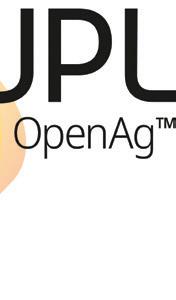
The winds of change are blowing across the Canterbury rural real estate market along with the “Norwester” as we step into spring.
The recent lift in Fonterra’s Farm Gate Milk Price and the downward shift in interest rates have sparked renewed interest, particularly in the dairy sector. Early spring growth across the region also contributes to increased confidence and enquiry.
The dairy market is currently experiencing a surge in activity. We’re seeing a significant number of qualified sharemilkers eager to step into farm ownership, bolstered by favourable financial conditions and improved access to capital from a banking sector more eager to lend. Established operators are also back in the market, seeking expansion opportunities to capitalise on the improving outlook. As a result, there’s a noticeable rise in interest in quality dairy farms.
Confidence in the broader pastoral sector remains cautious. Over the past 12–18 months, farmers have contended with a significant decline in commodity prices, compounded by substantial on-farm cost inflation. The Reserve Bank’s decision to hold the Official Cash Rate (OCR) at 5.5% since May 2023 has further weighed on sentiment as tight financial conditions persist.
Despite these challenges, there are pockets of optimism. The beef sector continues to defy broader trends, with near-record prices offering a muchneeded boost in confidence across the industry. All eyes will be on the new season lamb schedule as the market watches closely for signs of recovery.

Meanwhile, looking at land use change, the forestry sector is poised to play a more significant role in selling larger hill country properties, particularly those classified as land use class 6 and 7. Renewed investment interest from forestry buyers has emerged, albeit with pricing more aligned with historical pastoral values, offering a potential avenue for sellers of these properties.
In the arable sector, strategic and well-located properties of mid-scale continue to attract interest from buyers. However, properties outside key areas or lacking strategic appeal are struggling to find buyers, with some remaining unsold. The same can be said for dairy grazing properties where demand continues in the right locations, although the price per hectare has softened due to the higher cost of funding.
Overall, this spring is shaping up to be a pivotal time for the rural land market in Canterbury as confidence strengthens and buyers focus on prime opportunities across sectors. In support of this, we’ve seen winter sales activity up at the same time in 2023. I get the sense we’re on a rising plane, and the early bird may well catch the worm.
If you’re thinking about your next move, we’re here to help. For a confidential chat, feel free to contact me or any member of our experienced Rural Sales team.
Gareth Cox, Canterbury Rural Manager M 021 250 9714 E gareth@pb.co.nz
Zealand Quarterly Rural Sales 1 January 2021 - 30 June 2024 (20ha+)
Source: REINZ
A selection of Canterbury rural sales by team PB




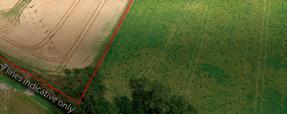
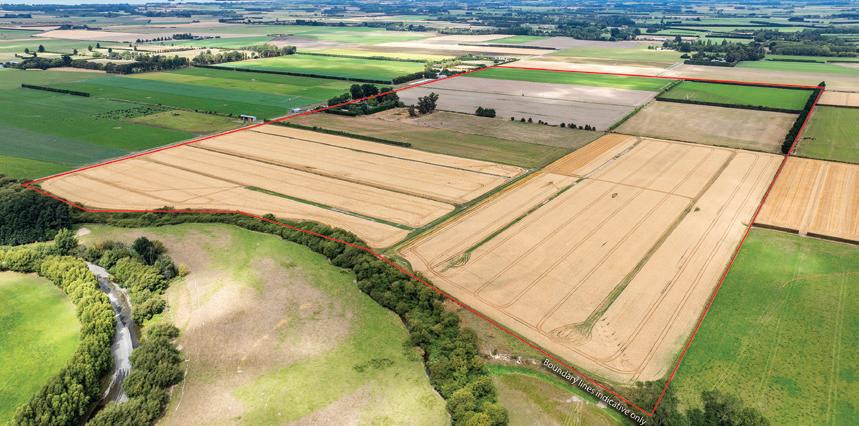
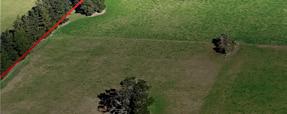
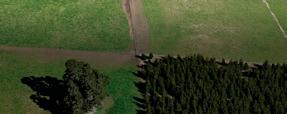
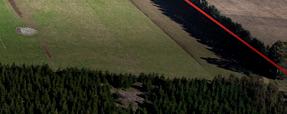
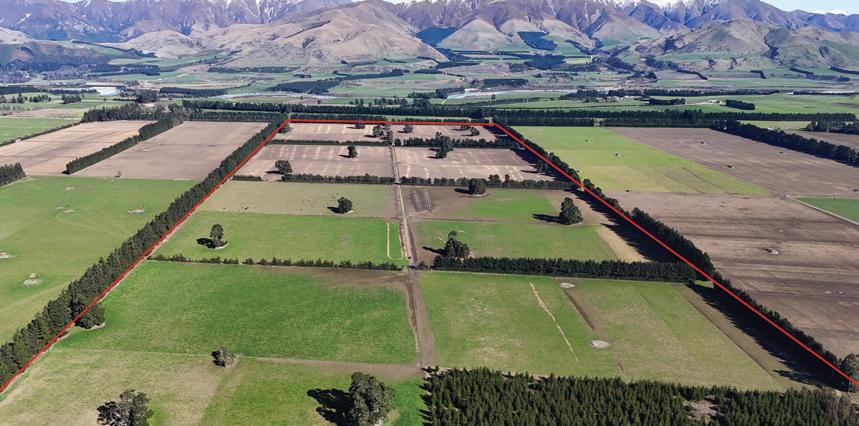
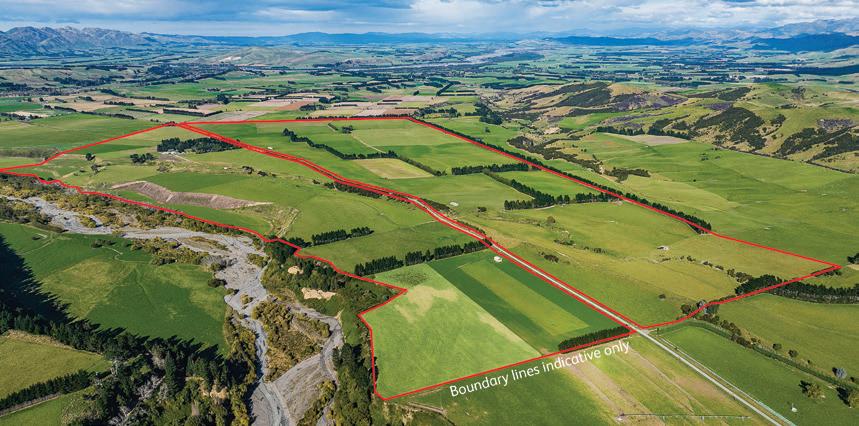




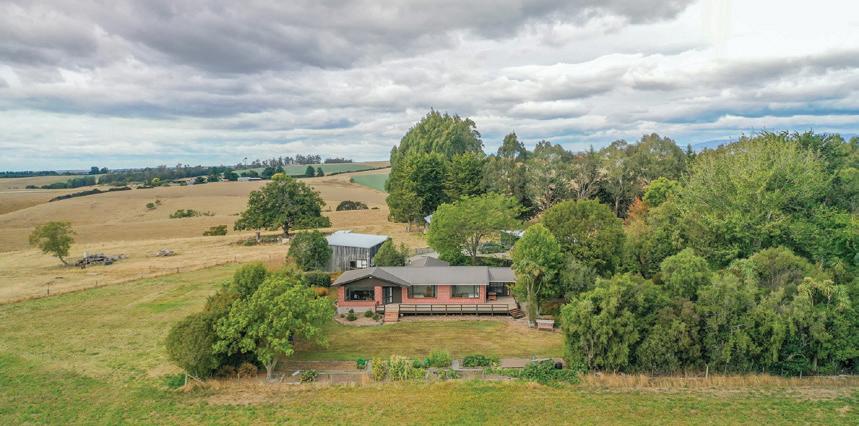





Meet Jason Rickard from Property Brokers Ashburton, the REINZ Rural Rising Star Salesperson of the Year. His success is no coincidence; it’s supported by Property Brokers Canterbury’s proud tradition and trusted advice. With firsthand farming knowledge and a corporate agriculture background, Jason collaborates with over 125 rural specialists across heartland New Zealand. This True Team approach is why more Canterbury farmers choose Property Brokers than any other company to deliver results*.
Talk to us today to achieve the best result for your property. Call 0800 367 5263 or visit pb.co.nz/rural You’re



Lincoln University and research and development company Cellora have agreed to establish a formal relationship focused on developing effective and sustainable agri-tech solutions for on-farm application.
Capitalising on the University’s world-leading research and Cellora’s commercialisation expertise the aim of the new partnership is to provide a pathway to market for Universityderived technologies, providing solutions for food growers that are both effective and sustainable.
In particular, the Memorandum of Understanding (MoU) the two organisations signed will enable commercialisation of the University’s research on novel bioactive compounds sourced from naturally occurring microbes, for the benefit of crop farmers in Aotearoa and worldwide.
Lincoln University Provost, Professor Chad Hewitt, said the new partnership is a natural fit between two organisations that are committed to supporting a more environmentally sustainable future for the landbased sector.
“Lincoln is a specialist university focused on providing world-class education programmes and impactful research that unlocks the power of the land to enhance lives and grow the future,” Hewitt said.
“Our land-based research is focused on supporting food and fibre producers in Aotearoa and internationally by developing new technologies and new ways of working that increase economic and social val-
Partnership: Lincoln University Vice-
Chancellor Professor Grant Edwards (left) and Cellora CEO Dave Campbell following the signing of a Memorandum of Understanding between the two organisations which is aimed at developing effective and sustainable agritech solutions for on-farm applications.
ue while ameliorating the environmental impacts of agriculture.
“By collaborating with Cellora, the University will increase its opportunities to bring our developing technologies to life, enabling our innovation to make a real difference in the world.”
Professor Hewitt said Lincoln will benefit from the market intelligence that Cellora can provide, ensuring the University’s research remains aligned with the most significant current and future market demands.
Cellora is a New Zealand-based company that develops and commercialises biological solutions to change the way the world grows food.
Cellora’s chief executive officer, Dave Campbell, said Cellora is committed to developing eco-friendly alternatives to synthetic pesticides, herbicides and fungicides, in col-
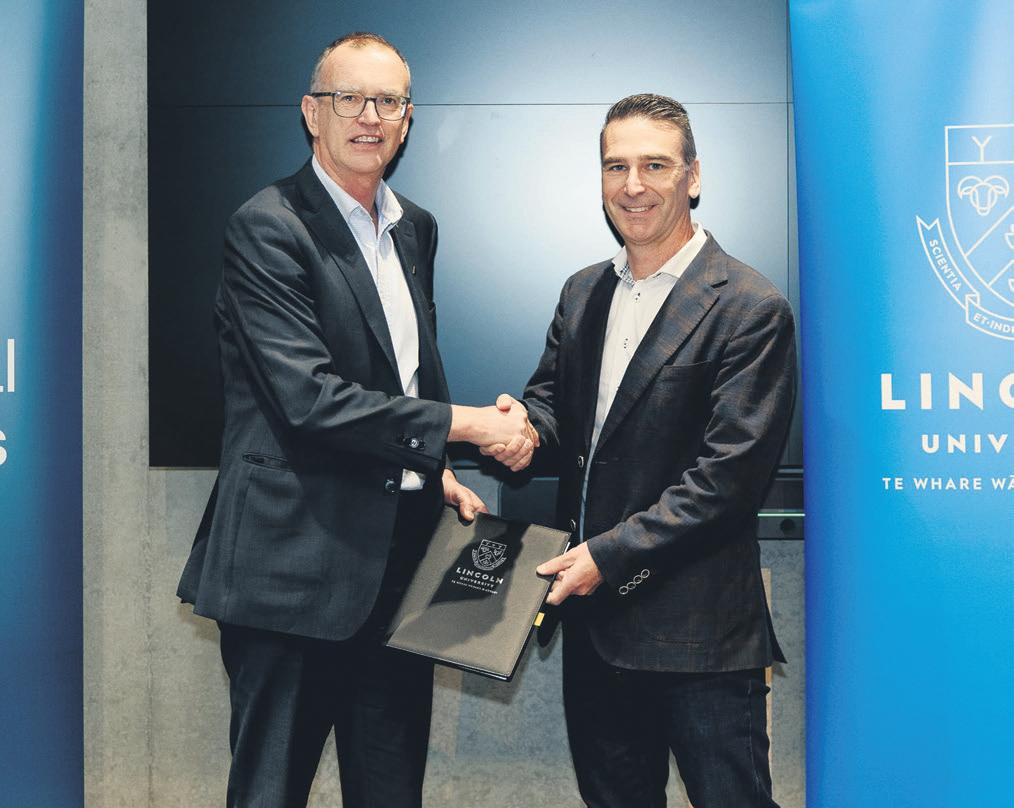
laboration with its research and market partners.
“Our vision is to accelerate the development of high-performing, safe and effective biological solutions that meet the needs of farmers, growers and customers while safeguarding the health and wellbeing of the environment and the communities living within it,” Campbell said.
“We believe in constant innovation and research to find new and more effective ways to protect crops, and Lincoln University provides an established and credible innovation pipeline.
“We are looking forward to helping growers worldwide achieve more sustainable food production by bringing New Zealand-derived innovation to life in real-world applications.”










For lifestyle blocks the bee is an asset as it pollinates clover, crops and garden flowers and produces that delectable sweet delight, honey.
] Article compiled by Kent
Caddick
Bees are extremely important to agriculture and horticulture businesses. While gathering pollen and nectar from clovers, fruit trees, garden flowers and many horticultural crops, bees move pollen from one plant to another, pollinating the plants as they go. This is necessary if the plant is to produce fruit and seed.
Among the main threats to bees are a reduction in flower numbers, the use of insecticides on farms and gardens and the onset of pests and diseases that weaken and kills bees.
Bees used to get much of their pollen from broom, gorse and willow, and the pollen was very nutritious for hives.
However, now many of these plants are now classified as pests by councils and the Department of Conservation, so there are fewer of them around. This means that in many areas, there is less pollen and therefore honeybee hives are weaker.
The effects of insecticides on bees can also be reduced by avoiding applying insecticides to flowering crops in daylight hours while bees are around.
Unusually warm temperatures in the early morning or evening may result in bees foraging when they would normally be back in their hive. If using pesticides choose products that break down quickly after application.
Pesticides that degrade within a few hours of application can be applied with minimal risk when bees are not foraging.
When temperatures are unusually low, insecticide residues may remain toxic for longer. Products with activity lasting more than 8 hours merit extra precautions.
The most hassle-free way of acquiring a
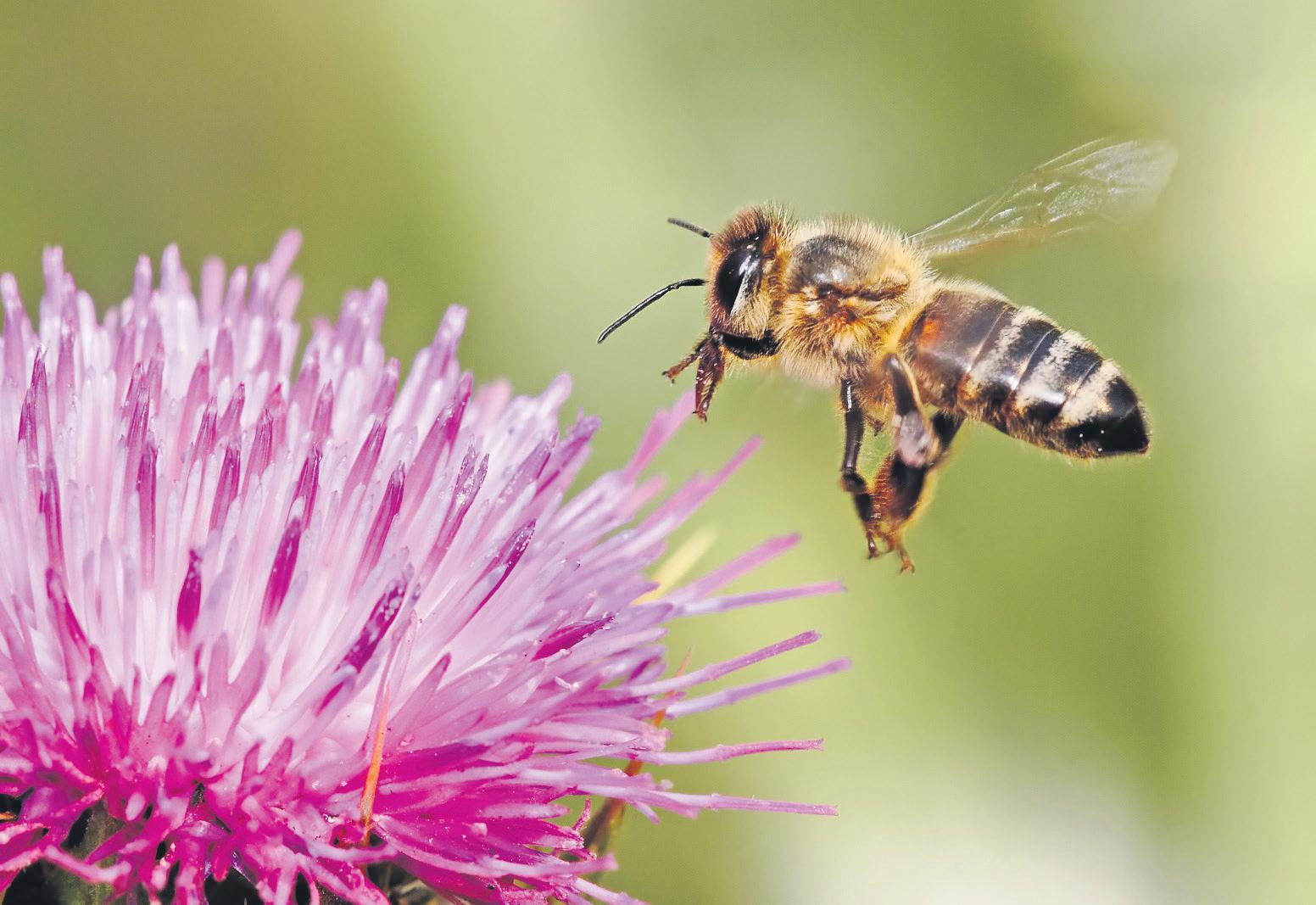







healthy bee presence is to ask a registered local bee-keeper if he or she would like to keep a few hives on your lifestyle block.
All you need to provide is a quiet sheltered sunny corner and plenty of flowering plants.
To encourage feral bees and bees from neighbouring hives, plant or encourage beefriendly trees and shrubs on waterway margins, in windbreaks, along field edges and roadsides and in native scrub and bush.
For more on how to encourage bees on your property go to www.lifestyleblock.co.nz
Natures helper: Plant or encourage bee-friendly trees and shrubs on waterway margins, in windbreaks, along field edges and roadsides and in native scrub and bush.








Farming families with a long heritage of farming their land have until 30th November to submit their application in time for this year’s intake for the New Zealand Century Farms and Station awards.
Families who have farmed their land since 1924 or earlier are eligible to apply for this special acknowledgment of their hard work and perseverance.
NZCFSA Chairperson, Edward Fitzgerald said judging by the number of applications already in, it’s gearing up to be another good year.
He said this year’s event held in May in Lawrence was another huge hit with visiting families, and the committee continues to receive accolades from those who attended.
“The award recipients find the whole process a very rewarding and emotional experience – from the gathering of their farming history through to the coming together of extended family at the awards ceremony,” Fitzgerald said.
“It is a chance for all generations to reflect on the challenges and achievements over 100+ years and share those memories, which are often very similar, with other farming families. It really is a special evening.”
He said the committee firmly believe that keeping any farm or station in a family from generation to generation through challenging times is an impressive achievement and deserves to be recognised.
The programme began in 2005 in Lawrence with an aim to capture and preserve family histories of pioneering families and
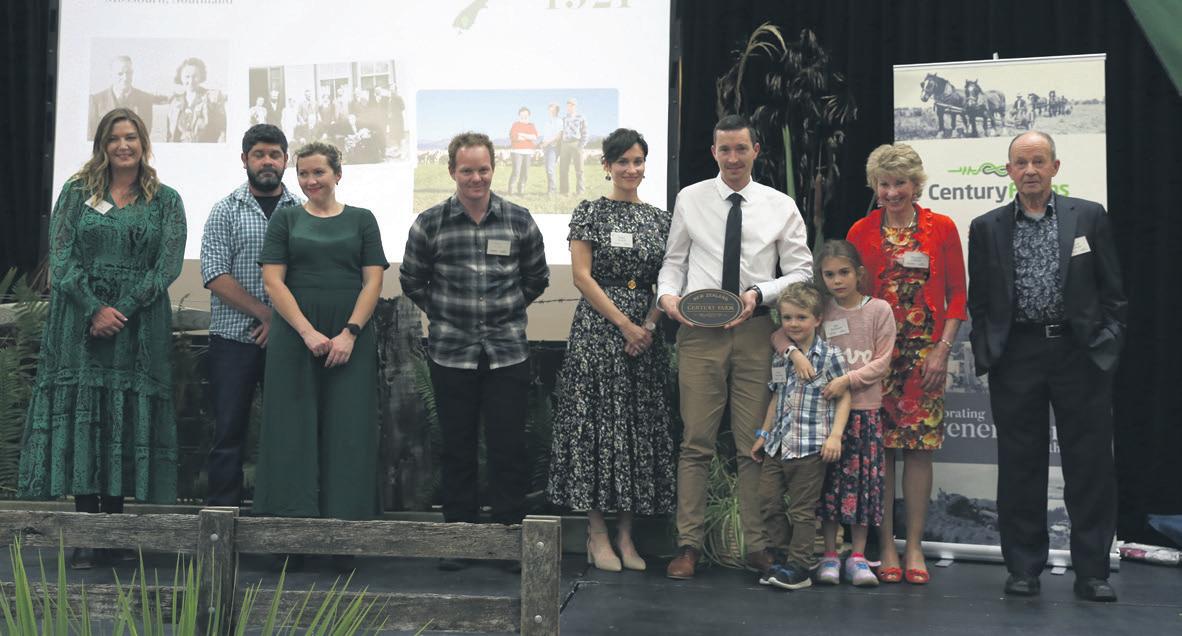
their descendants. Eligible families submit narratives of their farm history, together with copies of related photographs and supporting documents which are then archived at the Alexander Turnbull Library in Wellington, ensuring all records are kept in perpetuity.
A formal dinner in Lawrence each May honours the awardees and their significant achievement of 100 or more years in farming. It is a chance for recipients to meet each other and formally receive their distinctive

bronze plaque and certificate to display on their property.
To date, over 630 families from throughout New Zealand have joined this exclusive circle of centenarians and sesquicentenarians.
The programme has a “first in, first served” policy (capped at 40 families per year) for each awards event and the committee will use discretion on whether they carry applications over into a following year.
All in the family: the
Families are encouraged to get their application in early to avoid disappointment. The deadline for the 2024 application round is 30 November 2024.
Further information including application form can be found on the NZCFSA website www.centuryfarms. co.nz, emailing infor@centuryfarms.co.nz or by phoning Anne Barnett on 027 788 8135 or Karen Roughan, 03 485 9696 or 027 491 8528.








For South Island farms under irrigation, high altitude farms and farms not under moisture stress, new pasture can be sown in spring and autumn.
] Article supplied by DairyNZ
In these situations spring is often the preferred time for pasture renewal as paddocks can be renovated when there is a feed surplus.
The best economic benefit usually comes from strategically targeting paddocks with comparatively poor growth and which can be easily renewed – keeping costs down.
Pasture growth varies between paddocks on every farm. On many farms the worst paddock only produces half as much pasture as the best paddock.
Pasture growth records and grazing information can be used to rank paddocks on their performance. One way to find out how much a paddock grows is comparing the number of times it has been grazed relative to the number of cows.
Paddocks can be visually ranked using the ‘pasture condition score tool’. Visual assessment is important for recognising factors causing poor performance (e.g. pests). However anecdotal reports suggest a visual check alone may not provide a true assess-
ment of pasture yield. The more methods and assessments you have to compare, the better (and easier) the decision to renew will be.
The highest-producing paddocks illustrate the farm’s overall potential. Taking into account differences in soil type, terrain and drainage, identify the worst-yielding paddocks that could perform at the farm’s potential if quality pasture renewal was undertaken.
Understanding this potential yield increase from pasture renewal will allow you to assess the economic benefit of spring renewal in your system.
In highly stocked farms, the spring surplus period can be hard to predict and can cause pasture renewal to be pushed out past your targeted dates.
A strong economic benefit – determined from a good analysis of how your pastures are performing – provides justification to continue with your pasture renewal plan and not delay too long.
Further, a potential cost to delaying spring pasture renewal is the continuation of a poorperforming pasture. Delays may also lead to
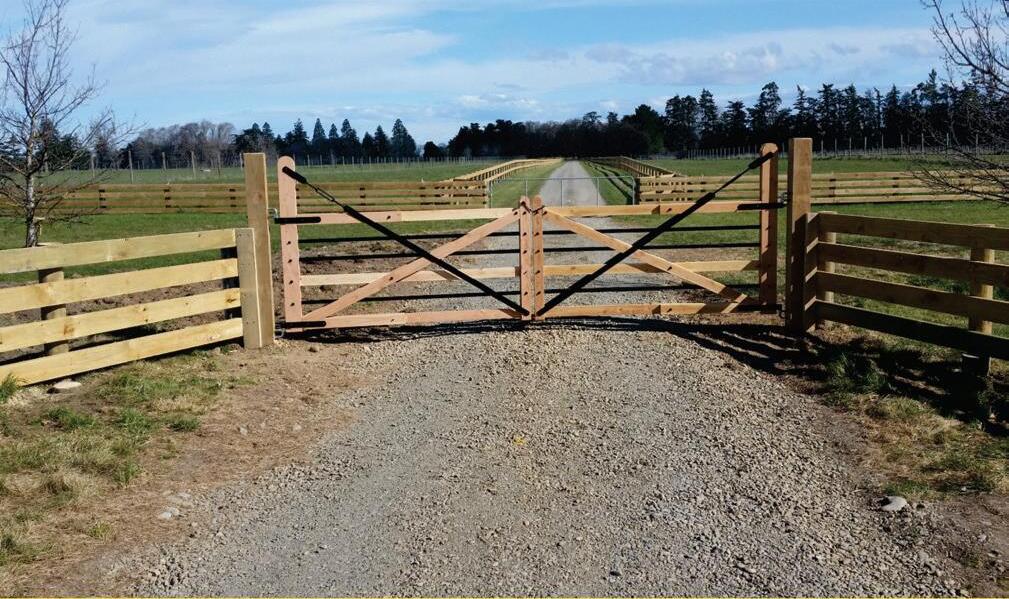


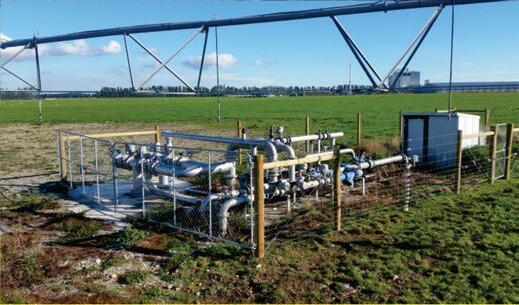
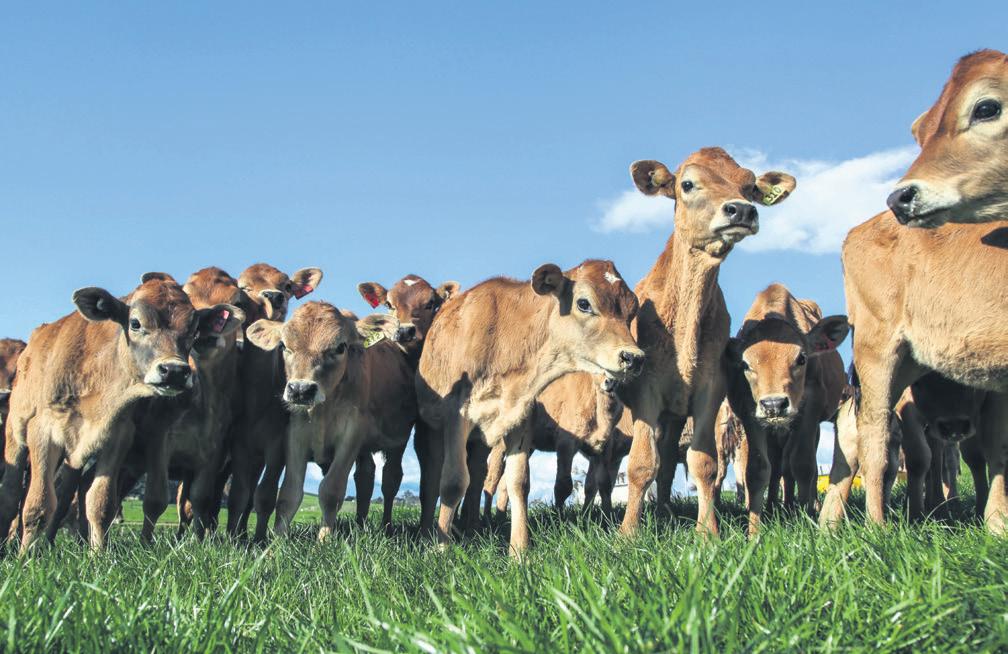
ingression of weeds while a late sowing date increases the risk of a summer dry period affecting pasture establishment.
Under low stocking rates pasture renewal may be used to control late spring pasture











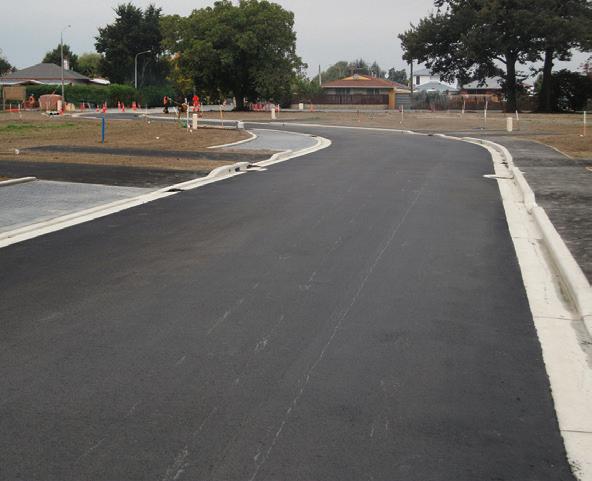



Scholarships designed to grow the rural health workforce have been awarded to 27 healthcare students from rural and regional communities through a partnership between Rural Women New Zealand and Health New Zealand/Te Whatu Ora.
] by Kent caddick
The scholarships, which range between $2500 and $5000, have been awarded to assist students from rural backgrounds continue their study in healthcare.
The scholarships come from an overall funding pool of $90,000 provided to RWNZ by Health New Zealand.
“We had a huge level of interest in these scholarships, and I want to congratulate each of the grant recipients,” Rural Women New Zealand chief executive Marie Fitzpatrick said.
“It can be extremely difficult to undertake study from a rural community and anything we can do to make study a little bit easier is great.
“While these scholarships cannot solve some of the challenges of travel and studying away from family and whanau, it is our hope they can help alleviate some of the
students’ financial challenges.
“We know New Zealand faces a significant shortage of health professionals in our rural towns and regional communities, so it is great to see recipients studying in a broad range of fields including in the areas of medicine, nursing, midwifery, pharmacy, physiotherapy and counselling,” Fitzpatrick said.
National Clinical Director Primary and Community Care at Health New Zealand Dr Sarah Clarke said the scholarships recognise the applicants hard work and commitment to their studies.
“Addressing the rural health workforce shortage is a priority for Te Whatu Ora and we are committed to improving health outcomes for our rural communities,” Clarke said.
“I look forward to seeing these scholarship recipients joining our rural health workforce over the coming years as they complete their studies.”
Helping out: Rural Women New Zealand chief executive Marie Fitzpatrick says New Zealand faces a significant shortage of health professionals in the country’s rural towns and regional communities.




Fairview Concepts, where precis meets durability in aluminium join Our expertly crafted solutions del both elegance and strength for yo home or business From sleek windows to robust doors, trust us to









Should we as a community protect and enhance all streams and drains, even those with no water in them?
Silly as this question may seem, protecting dry water courses is exactly where we are at with the current legislation.
The National Policy Statement for Freshwater Management (NPS-FM) introduced Te Mana o te Wai into the regulatory framework in 2020. This means that when applying for consent, the health and wellbeing of water bodies comes first.
An amendment bill was introduced to parliament earlier this year. This seeks to exclude the hierarchy of obligations associated with Te Mana o te Wai from the resource consent process. However, regional councils will still have to give effect to this hierarchy in regional policies and plans.
Should we support this approach? Which water bodies in an area should be protected and enhanced? The regulatory framework suggests all of them. But is this realistic and feasible, especially where some may be dry for extended periods.
Consider the Hinds Drains area; much of this was once swamp/wetland, although digging of drains helped turn this area into productive farmland. The flows in many of these drains have reduced in recent years and
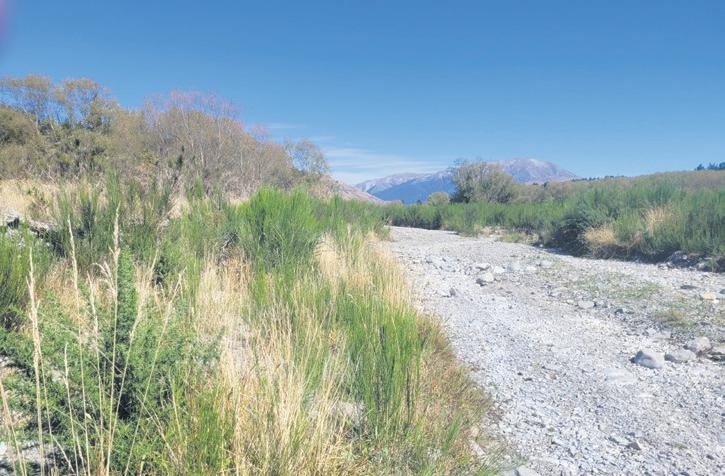
many are dry for prolonged periods of time.
Two of the main reasons for there being less water in these drains, are the removal of border-dyke irrigation upstream, and flow into them from Ashburton District Council (ADC) stockwater race tails ceasing.
Both changes were widely supported, indeed pressure was exerted on the irrigation schemes and ADC to make these changes in order to improve water use efficiency.
Society pushed for these improvements, with no consideration of the impact this may have upon the drains, yet the implications have been huge.
Drying up: current legislation could see farmers forced into protecting dry water courses.
Given this background, is it now appropriate to try to improve and enhance the ecology in all of these constructed drains? This is what the current regulatory framework would suggest (even after the Amendment Bill).
Many communities already prioritise some waterbodies over others. There has been some fantastic work carried out to improve the ecology in many water bodies.
But what of other drains in the Hinds area? What of other drains, streams, and rivers in other areas of Canterbury that may be dry much of the time? Should our focus be
to try and find a solution to resurrect all of these features?
Or should we identify where the best ecological values may be and invest to protect and enhance those features?
If the decision from this process is that we should focus on all water bodies, as part of that decision, there should also be assessments of the options available for its achievement.
How can this be achieved? How should it be paid for? What are we willing to give up to achieve it? How should those that have to give up most be compensated?
If we are not willing to consider all of these sorts of questions, then costs will fall to a very small number of people within our community. Is this fair?
Communities or catchment groups should decide these matters and make their views clear to the regional council. If this does not happen, we will need to accept the consequences of the approach that all waterbodies need to be protected and enhanced – even when they don’t have water in them.
These considerations should be near the top of catchment and community group agendas for discussion.
Not being active on this now may have huge ramifications for you and your district.




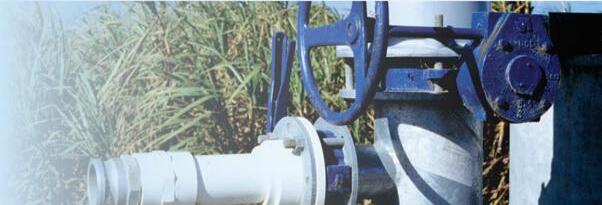
Greenpeace Aotearoa will run free drop-in drinking water testing events for nitrate contamination in Amberley and Oxford this month.
] by Kent caddick
The events will take place on the 18th (Amberly) and 20th (Oxford) of October. These events follow test results earlier this year that indicate high levels of nitrate in the Waimakariri District and wider Canterbury region.
Greenpeace spokesperson Will Appelbe said over the last three years, they have consistently found high levels of nitrate in both private bores and public water supplies, and it has emphasised the need for both free water testing and an end to drinking water pollution at the source.
“Access to safe, healthy drinking water is a fundamental human right, but in New Zealand’s rural communities, particularly in Canterbury, that right is being eroded,” Appelbe said.
“No one should have to worry about whether the water coming out of their tap is safe to drink, but that is the reality for many people living in rural Canterbury today.”
He said a growing body of research has shown that even small amounts of nitrate contamination in drinking water can increase the likelihood of health risks such as bowel cancer and preterm birth.
“Now, public town supplies are reaching levels as high as 5 mg/L, the level at which studies have shown that risks of premature birth increase by almost 50%, and many private bores are testing above the current maximum allowable value, set decades ago to prevent against blue baby syndrome.
“In April, we found that three town supplies in North Canterbury were testing above
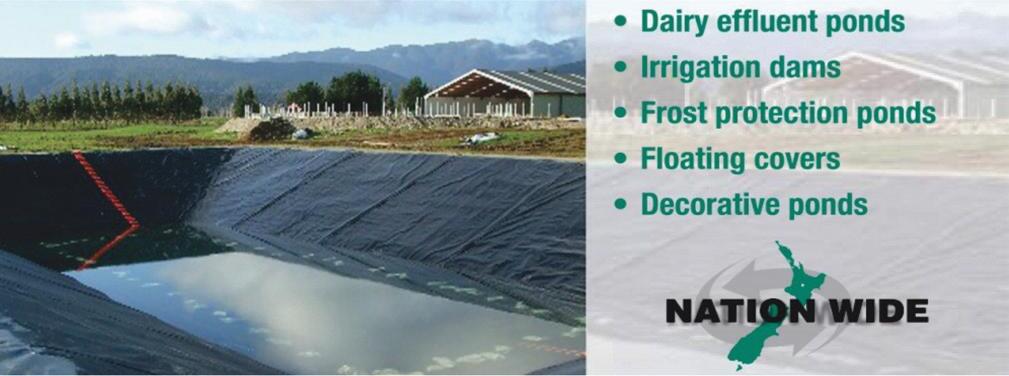


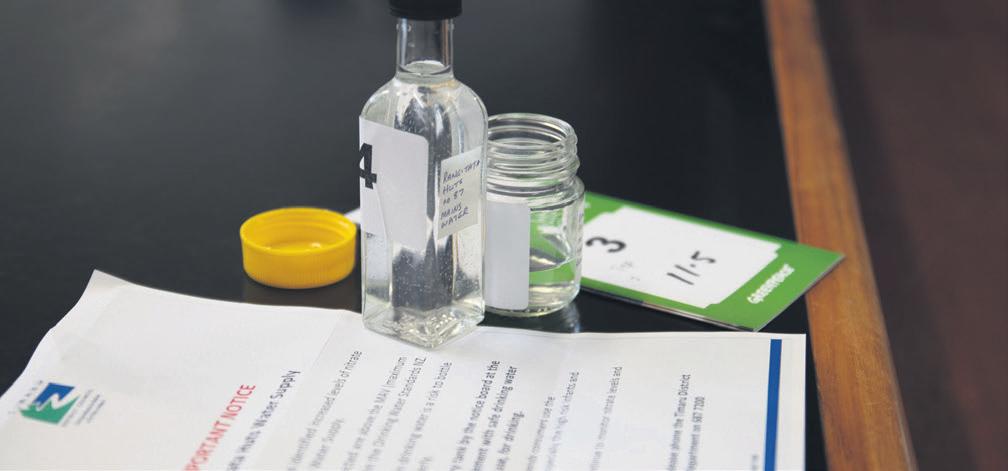
Quality: The quality of drinking water in rural Canterbury will came under the microscope again with Greenpeace running two free drop-in drinking water testing events this month.
5 mg/L of nitrate, the level at which the NZ College of Midwives warns can increase the risk of pre-term birth for pregnant people who drink this water. One of those supplies was the Oxford Rural One town supply.”
Appelbe said they are deeply concerned about the potential for people on private bores in Canterbury to be drinking unsafe water.
“Previous testing events have found private bores at levels of nitrate as high as 25 mg/L, more than double the Government’s maximum allowable value of nitrate.”
Nearly two thousand water samples have been tested by Greenpeace since 2021, at more than twenty in-person water testing events and through the organisation’s mailin testing programme.
“Rural communities are most likely to be impacted by high levels of nitrate contamination in drinking water, because they are the closest to intensive dairying – the main source of nitrate contamination,” Appelbe said.
“Ultimately, it is very difficult and expensive to remove nitrate from drinking water once it is in a water supply.
“The long-term solution to improve drinking water quality for these communities is to stop the pollution at source, and that means phasing out synthetic nitrogen fertiliser use, and reducing dairy herd numbers.”
For more information on the free testing go to: www. greenpeace.org/aotearoa

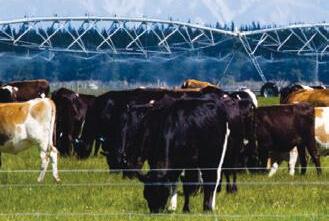
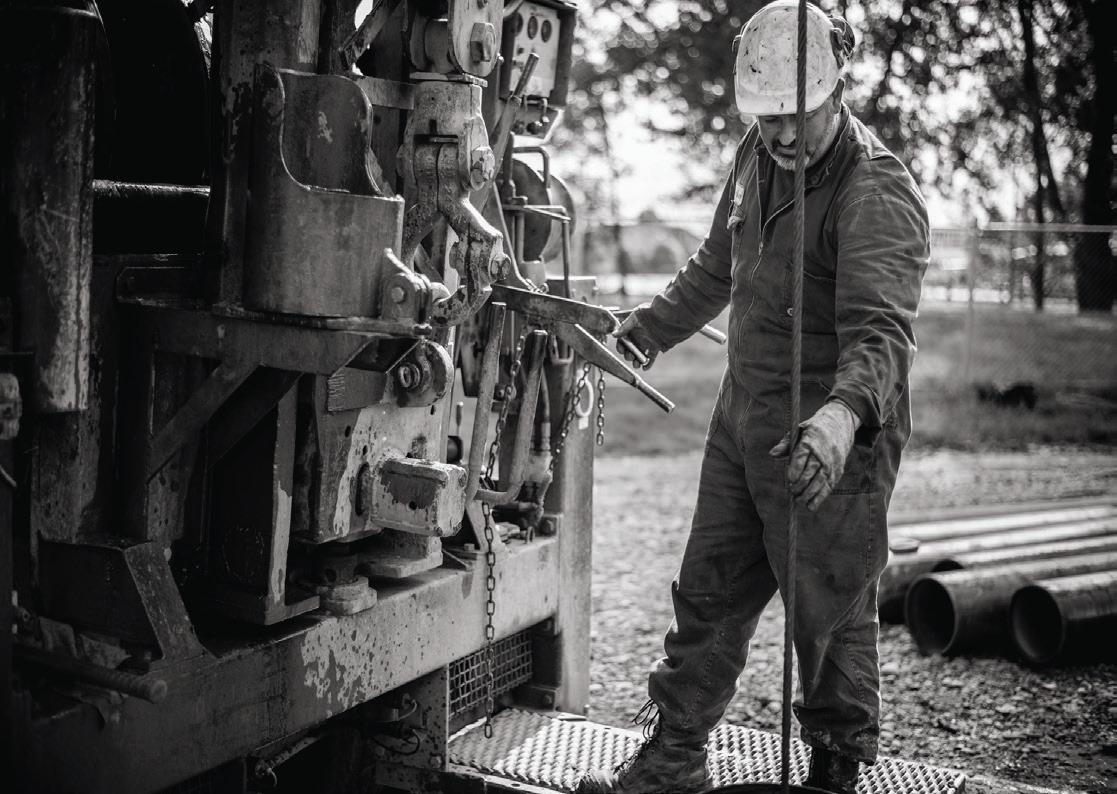

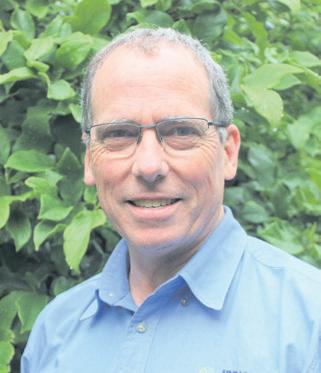





The seasons have rolled by, and again, we are about to consider the irrigation activities of spring and summer.
] by Stephen McNally
IrrigationNZ
Principal Technical Advisor
Many felt the impact of the El Nino dry season with low soil moisture content, flow restrictions and limited storage. In some districts the effects will carry over to create a degree of uncertainty on those factors needing to wait and see what spring rainfall and snowpack melt will look like.
The on again off again implementation for the new Freshwater Farm Plan regulations might sound daunting, but I’d suggest that most farmers and growers will already have a tight grip on what affects their businesses as risks, opportunities and actions.
If you have irrigation on your operation, you’ll be well aware of what the current Farm Environment Plans (FEP) require of you.
Under your FEP, you were already given targets to meet; adopting good industry practice for design, installation, and commissioning; monitoring the performance of your system applying good operation and maintenance; and having a thorough understanding of the timing and depth of irrigation applied taking into account crop requirements, soil moisture, and climatic information.
IrrigationNZ would like to see any move to transition into FWFPs to keep the farmer at the centre of the decision process around accounting for environmental risks and having the flexibility to set and adjust actions as
the season unfold. There is clearly a case for applying judgment to actions between the swings of El Nino and La Nina years.
Having a focus on good management targets, you’ll already be in good shape regardless of the progress of legislative change. It may need some adaptation of language and documentation, but the new process should allow you to be operationally specific, taking a close look at your inherent farm and management risks. So, the original targets will remain as a great benchmark to work from to set down actions and timeframes.
Hopefully your irrigator was stored and anchored safely in place at the end of the last irrigation season. We will likely still see some strong wind periods so think hard before unparking machines or undoing any anchors.
If you aren’t across wind management planning with your staff, have a look at the great guidance on Point Park and Anchor we provide with FMG.
As you move into spring and prepare to set up the machine for the first irrigation run, be aware that a real risk is an extreme wind event blowing into your operation. Always be ready to re-park the machines back in your identified safe location and secure them. No one wants to deal with the aftermath of a rollover.
As part of your risk assessment, you’ll no doubt have thought about the startup sequences. Not always obvious, the first step is to revisit your consent allocations and re-
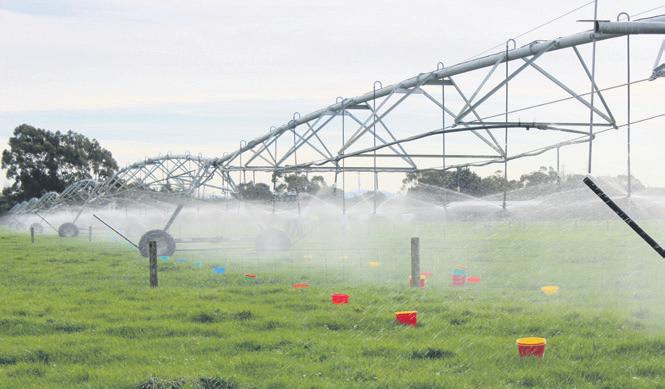
quired water usage reporting through the upcoming season.
Ensure nothing has changed with your irrigator or control system that might unintentionally push you beyond peak flow limits or annual allocation.
As you review your irrigation scheduling records from last season bear in mind we were battling a pretty dry season and setting might not be appropriate coming into this year’s irrigation.
Think about what worked and what didn’t? You would have needed to make setting changes as last season unfolded. You might need to go back a couple of years to find a wet period following a really dry period to compare and get yourself ready.
You’ll need to perform some mechanical checks too. Are all nozzles and hangers still in good condition? Look for any damage around
Check it: A bucket test is a great way to ensure your system is operation how it should be for the upcoming season.
the machine and pump stations. Have you cleaned the sand traps and addressed any obvious issues before starting the pumps? Is everything mechanical greased and ready to move? Are the wheel tracks still clear to make it back?
Check your pump shed for rodents or bird nests that could have found their way in over winter. Be cautious when opening electrical panels, looking for damaged cables or water ingress.
If unsure, get your qualified irrigation system performance assessor onsite to complete an evaluation that may include doing a bucket test.
Then if necessary, bring in your service company to do any important repairs. Keep your service records up to date so you can present a robust case to an auditor on how you are across good preparedness.


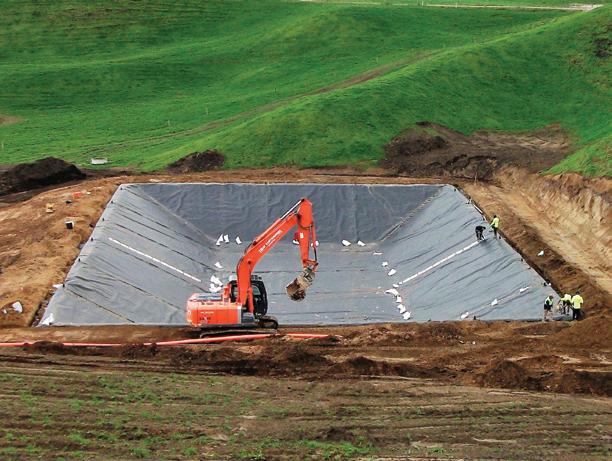

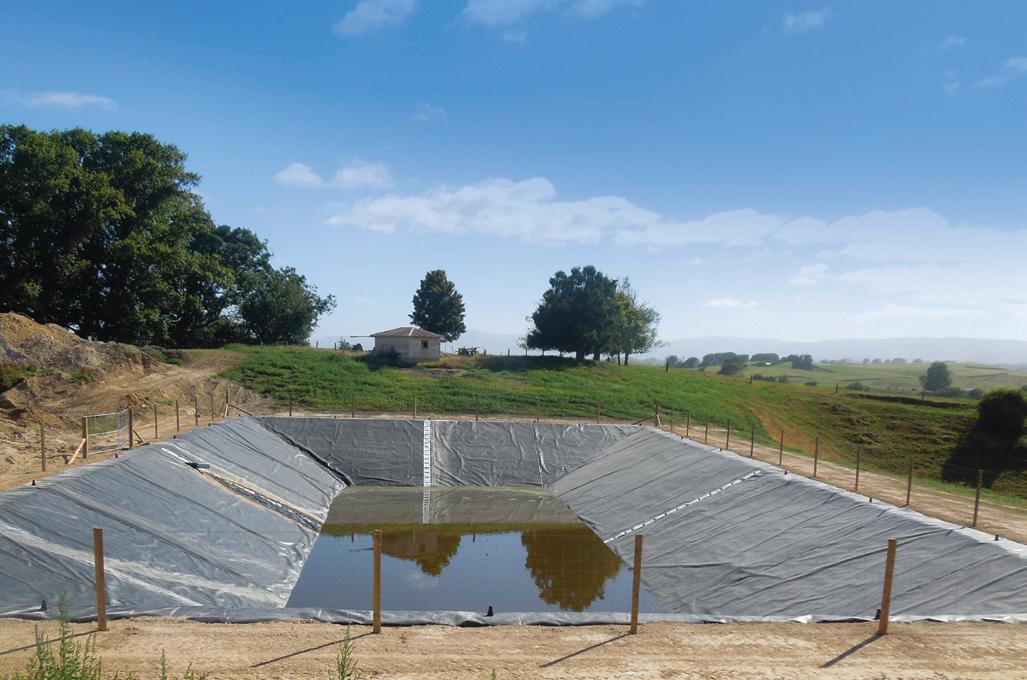




Horticulture New Zealand is supporting the Government’s decision to pause the freshwater farm plan rollout.
] by Kent caddick
Acting chief executive of Horticulture New Zealand (HortNZ) Michelle Sands said they agree with the Government that we need a fitfor-purpose system for freshwater farm plans that works for horticulture and delivers on environmental outcomes.
“HortNZ wants a nationally consistent approach to planning rules to provide certainty for commercial vegetable production in New Zealand
“We believe that the optimal approach to making progress on regulatory issues is to establish a pathway to enable growers to use industry assurance programmes like New Zealand Good Agricultural Practice (NZGAP) and GLOBALG.A.P. to meet market and regulatory requirements via one integrated farm plan,” Sands said.
“We are encouraged to hear that the government is wanting to integrate existing industry assurance programmes into the Freshwater Farm Plan System.
“We want to see recognition of programmes like the NZGAP Environment Management System, which is trusted, robust and meets the desired policy outcomes.
“It would fit with the Government’s goals and enable growers to find the right solutions for their farms and catchments.”
Sands said HortNZ is also calling for commercial vegetable production (CVP) to be-
come a permitted activity for growers with a Freshwater Farm Plan (FWFP).
“Over 80% of NZ-grown vegetables are grown for the domestic market,” she said.
“New Zealand’s growers are committed to operating to good management practices and the industry is committed to supporting them.
“That includes through product group research like the Sustainable Vegetable Systems programme and the HortNZ/Ministry for the Environment Growing Change project, which is supporting growers to develop their FWFP through a catchment-led approach.
“We encourage growers to maintain their ongoing efforts in environmental management via GAP and the EMS, supported by Growing Change, and to continue their sustainability journey despite the policy uncertainty.”
Sands said regional councils have been unable to develop workable rules for vegetable production.
“Some regions constrain crop rotation, constrain nutrient supply to a level which reduces the amount of vegetables that can be produced and constrain expansion so growers cannot grow more vegetables to feed our growing population.
“Regional councils are not well-placed to balance national benefit with local effects. The risk is regions make unworkable rules for commercial vegetable production, without

taking into account the national importance of vegetable production in securing a resilient supply of healthy fresh food for New Zealanders.”








Many people with a septic tank on their property won’t have thought about whether or not it poses a drowning risk.
] Article supplied by Ecan
However, the tragic death of a three-year-old in Australia, and a similar case in Whanganui just months earlier, have highlighted the potential dangers of onsite wastewater systems.
A Coroner’s report into the drowning of Nihal Hundal in Victoria in 2023 describes how the lid on a septic tank easily dislodged, and he fell in while playing.
The report notes that while these types of drownings are rare, Nihal was one of three children who died in septic tanks in Australia over an 18-month period.
Local service professionals and Environment Canterbury resource management officers sometimes come across lids that are insecure or broken and in need of replacing.
Resource management technical lead Jessica Newlands said broken lids are commonly seen with the older style concrete tanks. Often, the homeowner is not even aware of the location of the septic tank.
“We want to see tanks complying with regional rules and resource consents but we also want to prevent such tragedies here in our region,” Newlands said.
Standards Australia (which develops safety standards for Australia and New Zealand) is now proposing to mandate the installation of fixed security grates in septic tank openings.
Water New Zealand (WNZ), the country’s largest water industry body, has given feed-
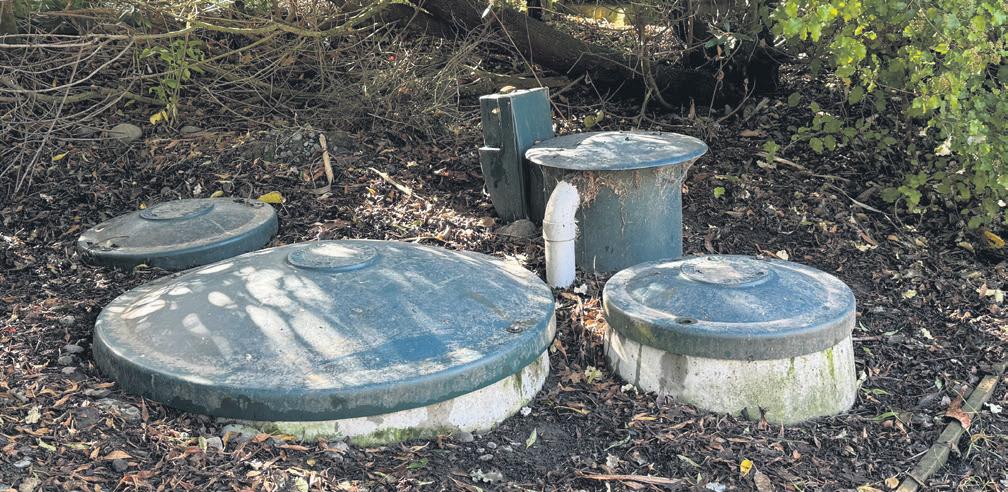
back on the proposal through a submission.
Several members have reported their own instances of slipping into septic tanks that weren’t properly secured.
The organisation’s technical lead Lesley Smith said it’s a fairly regular scenario.
“In most cases, the person might just end up with a wet foot, but there’s the potential for it to be a lot more serious.”
While Water New Zealand supports improved measures for preventing falls into septic tanks, its overarching view is that enforcement of existing requirements would be the most effective approach, rather than updating the Standard. The current Standard includes a requirement that lids and access openings are secured.
As stated by Water New Zealand, onsite wastewater management services are required to meet best practice engineering standards and council rules to mitigate the risks to humans, stock and the environment.
Regional councils administer rules for the discharge from wastewater systems under the Resource Management Act, while district and city councils administer rules under the Building Act.
In Canterbury, a resource consent is required for onsite wastewater systems, unless the property owner can comply with the Permitted Activity rules in the Canterbury Regional Land and Water Plan. These rules apply to any existing, modified, upgraded or new system.
Septic safety: Water New Zealand encourages everyone with an onsite wastewater system on their property to check access-point lids to ensure they’re secure.
Our website has more information on the rules for operating an onsite wastewater system.
Smith encourages everyone with an onsite wastewater system on their property to check access-point lids to ensure they’re secure.
Another opportunity to check for any safety issues is when maintenance and sludge removal is being carried out. This should be only done by a suitably qualified professional.
As Smith points out, awareness is key.
“If all septic tank owners could take just a minute to check their lids are fixed securely, that could go a long way to preventing another tragedy.”













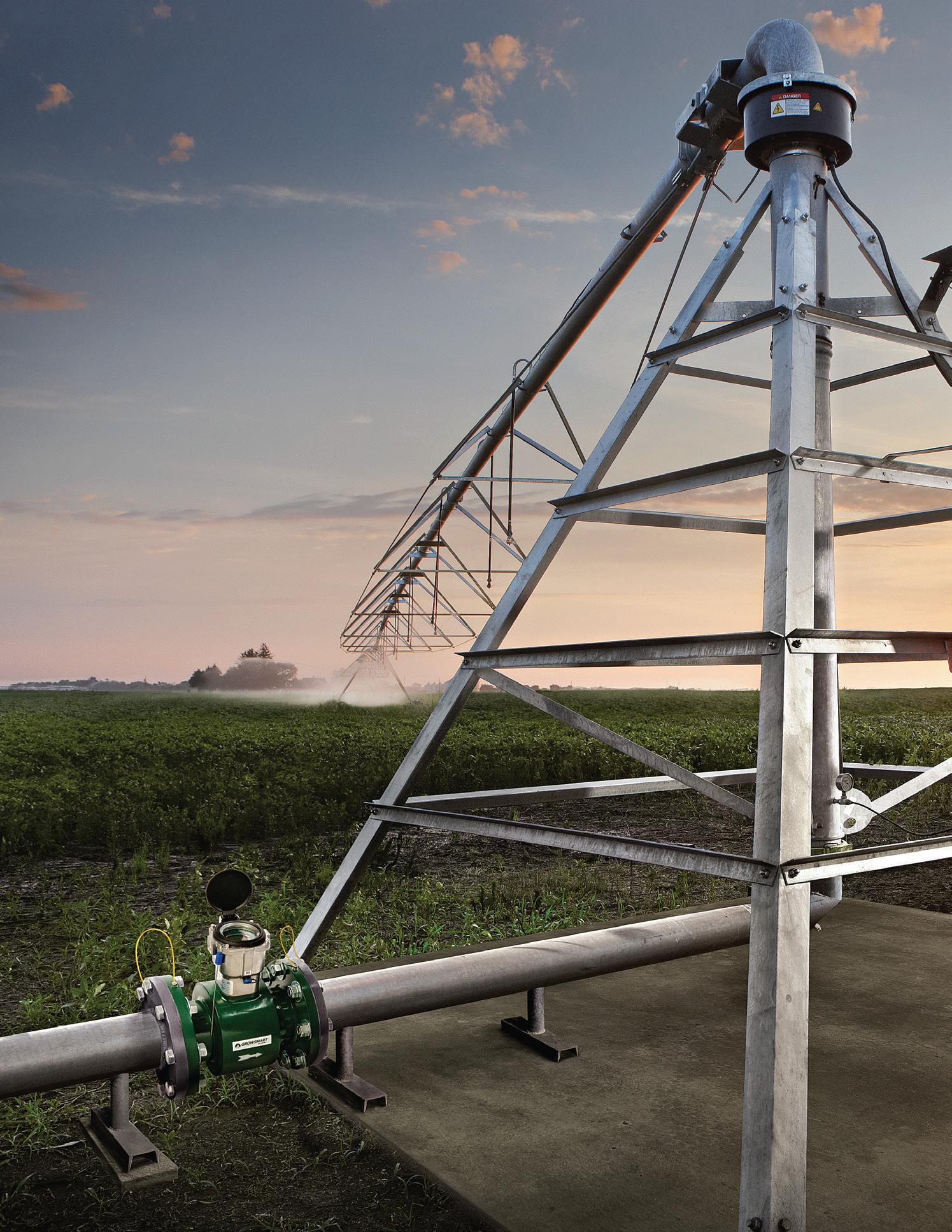



















A critically threatened endemic freshwater fish found only in Canterbury has been discovered at a Craigmore Sustainables farm near Timaru.
] by Kent caddick
The Kowaro or Canterbury Mudfish has been confirmed at the Somerset dairy farm south of Timaru following visits by Department of Conservation recently.
The population of mudfish was found living in the farm’s irrigation spring, an ideal habitat for mudfish because of the clean, clear water and the dense aquatic plant growth. The DOC team netted 72 mudfish ranging in size from 77 mm to 149 mm in length.
Somerset business manager, Alex Pattullo, said the discovery follows the completion of a comprehensive waterway restoration project over the last two years.
“We have replaced the old diesel irrigation pump with a new electric pump to reduce risk of any chemical leeching or contamination and fenced the site to stock-proof it,” Pattullo said.
“In addition, more than 2,760 native plants consisting of dry woodland shrubs and trees as well as flax and reed plants have been planted at the water edge.
“This will ensure a regenerating native bush block around the site, providing shade,
Restored: Threatened Canterbury Mudfish have been found thriving at Craigmore Sustainables’ Somerset Dairy Farm near Timaru following a comprehensive waterway restoration project.
Photo: Department of Conservation
shelter and food for many native and endangered species.”
A report by DOC states riparian planting is “extensive” and “had a variety of species”.
The report concluded that the composition of macrophytes (acquatic plants) in the water was diverse and representative of good water quality and stable hydrology, both good indications of habitat quality.
The water itself had excellent clarity, probably because it was spring-fed and largely free of stock.
Stuart Taylor, Craigmore’s general manag-

er of farming, said the company regards it as a privilege and a serious responsibility to be entrusted to manage land, soils, water and other natural resources in New Zealand
“Craigmore has a number of sustainability programmes in place to ensure we strike a balance between respecting the environment and running a sustainable and profitable rural operation,” Taylor said.
“We strive to grow healthy and safe prod-
ucts while at the same time protect and enhance soil and water quality.
“We’re committed to leaving the world in a better place and allow the generations that follow to continue to earn a living from the land.”
This article was compiled using information supplied by Craigmore Sustainables. For more information go to: www.craigmore.com











There’s a lot of things for farmers and workers to keep track of on rural properties these days.
From vehicles and equipment to static items such as water and fuel tanks, sheds, pumps and more it can sometimes feel like the list of things you need to manage is forever growing – but without any additional time in your day to get around to checking on them.
Nuvola’s Internet of Things (IoT) range aims to help alleviate these time challenges by offering cost effective monitoring solutions that work great on rural and remote properties, for farming applications and beyond.
Adding to their range, Nuvola offers electronic tank or silo monitoring equipment, installation expertise and an online portal (via the Senstera platform) to view and monitor your tank or silo levels with historical data available too.
Actions can be created in the online portal for different purposes such as warning
you a water tank is below expected levels. When these conditions are met, notifications can be delivered via TXT/SMS or email directly to whoever needs to know so they can take action.
The equipment is easy to install with a long battery life of up to 5 years and utilises internal batteries that are user replaceable as required to avoid the need for service technicians and helping to keep the costs down.
Because Nuvola is utilising IoT technology for these solutions, connectivity of these devices is flexible even for more remote properties with difficult to traverse landscapes or features.
An IoT gateway is simply placed where there is an internet connection available (such as within the homestead or on-site offices) and devices within several kilometres are able to send their data back to the online platform via the gateway using radio transmission without direct line of sight.
This also means that multiple devices can be easily deployed on a property for various use cases without the need to invest in multiple different gateways.
There are two go to devices that Nuvola utilises for measuring and monitoring tank or silo levels. Their ultrasonic device option measures the distance between the sensor to a surface (e.g. fluid or grain), these start at $230 per device and then $9.75 per month.
For water tanks, Nuvola has had great success using a submersible probe sensor that measures the amount of water above the probe; these start at $550 per device and then $9.75 per month.
The monthly charge covers network connectivity and access to the Senstera platform to historical data and add or manage alerts/notifications with multiple devices able to be managed by one Senstera account.
An important thing for us at Nuvola and Senstera when developing this range of
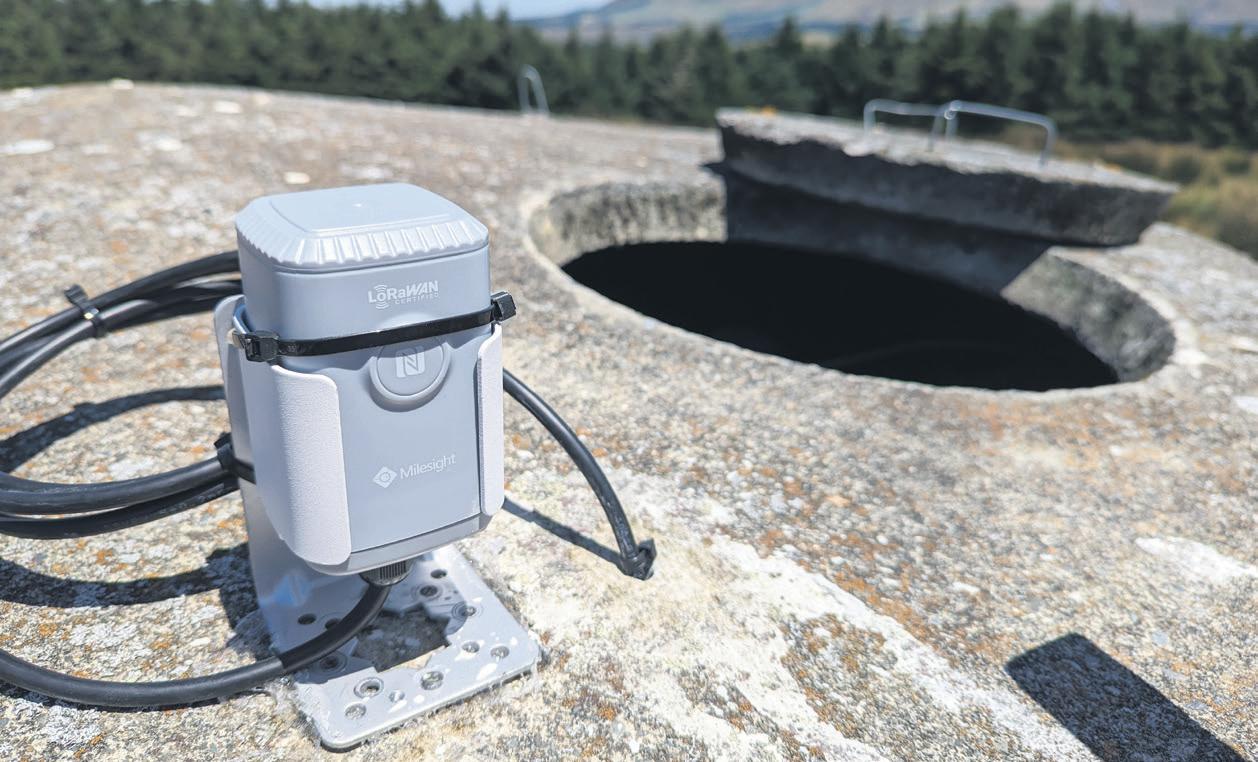

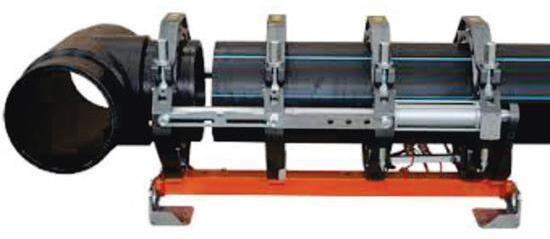


products was the cost and reliability and as such, we’ve spent considerable time field testing and ensuring that all their devices on offer are reliable and ready for quick deployment.
We have also worked hard to price them to be accessible for every-day users and small businesses with the low monthly cost of $9.75 per device which includes the online platform to view your data in.
Other Nuvola IoT solutions can be quickly added alongside any tank or silo monitoring such as flow metres for irrigation, vehicle or asset tracking, weather stations and more use-cases.
We’re thrilled to continue to offer a wide range of Internet of Things products to the New Zealand market with local support and servicing options.
No matter your requirements, call David or Alex at Nuvola Solutions on 0800 688652, email sales@ nuvola.nz for more details or visit us online at www. nuvola.nz.






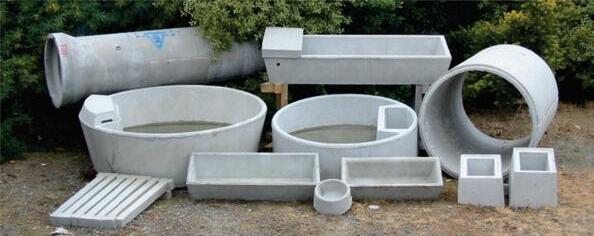





At least one in three Kiwi sheep farms has triple drench resistance according to the latest drench efficacy testing undertaken by digital diagnostics company Techion.
] Article supplied by Techion
Based on Techion’s 2024 FECRT results the number of farmers impacted by drench resistance is trending up exponentially.
A further analysis of data estimates the production cost to the sheep industry at $110 million annually, equating to around $70,000 per property for farmers unknowingly using ineffective drench.
Every year Techion undertakes more than 50,000 FEC (Faecal Egg Count) tests at its Mosgiel laboratory and its network of FECPAK users including FECRT (Faecal Egg Count Reduction Test) through its DrenchSmart service.
Results for the first seven months of 2024 showed that triple drenches (BZ/Lev/ Aba) were failing on 34% of New Zealand sheep farms. Other common drench options fared no better; BZ/Lev combinations failed on 47% of properties, while Lev/Aba combinations failed on 39% of properties tested.
Techion founder and managing director Greg Mirams said the sheep industry’s reliance on drenches to deal with parasites is the reason a growing group of farmers are facing the failure of their drenches.
“The good news is that the problem can be managed. However, farmers have to integrate alternative parasite management approaches and move beyond relying solely on drenches to deal with the parasite problem.
“Another significantly worrying trend in this year’s results is that drenches includ-

ing Monepantel/Abamectin (sold as Zolvix) and Derquantel/Abamectin (sold as Startect) are showing signs of diminished efficacy on a growing number of properties.”
Mirams said while the underlying reason for these newer actives losing efficacy is yet to be explained, at this stage it appears there is a link between the increasing failure of Abamectin active with properties that have a parasite population that is highly resistant to a range of other drench actives.
“As access to effective drenches reduces, integrated parasite management strategies

Direct injection, underslung (single or multiple zones) tower guns?

Exclusion zones over tracks, waterways and more

are essential to safeguard the future of animal health and performance,” Mirams said.
“With a one in three chance of new stock coming from a farm with triple resistance, it is essential farmers’ quarantine procedures are effective.
“By undertaking FEC testing following a quarantine drench, farmers can gain comfort that imported animals are not passing resistant parasites onto their property.
“Beyond the quarantine procedure, farmers need to take control of their parasites by educating themselves on alternative parasite
management options related to their operation. The key is the ability to monitor FEC levels and the implementation of integrated parasite management strategies.”
He said at a time when the farming sector is facing low returns, being able to manage farm costs is vital.
“Paying for and using drenches without checking they are working could be wasting time and money. The most critical step is to know what you are dealing with, which begins by investing in a FECRT test to ensure that the drenches being purchased are effective.”
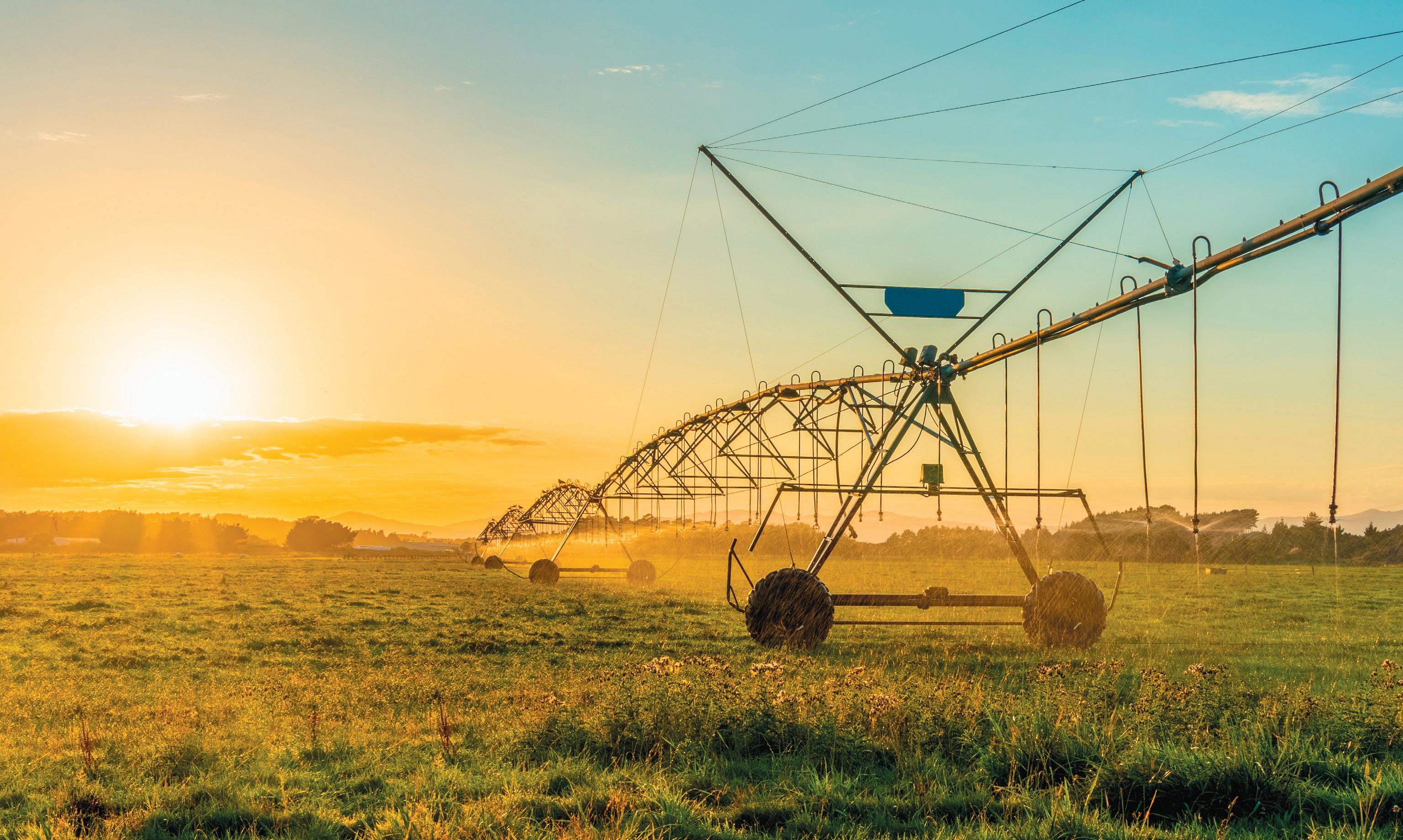












A small lift in log prices in September has seen some harvest projects get underway again with many loggers and truckers back to work.
] with Allan Laurie MNZIF
] Laurie Forestry Ltd
India is now very much in the log export mix, adding price points and log grade options that currently reflect an overall better bottom line than China.
Our domestic mills are experiencing tougher times. Sales volumes are weak with a lot more competition for a market that is dynamically too small for what can be produced. Mills have been building stock and discounting to keep the wolves at bay.
Given that many sawmills also export lumber, sales volume problems are not helped by container freight costs, which like breakbulk logs, have been increasing leaving many export destinations running at a loss.
The closure of Winstone’s Kariori pulp mill and Tangiwai sawmill is devastating for the Ruapehu District and the individuals who have lost their jobs. The word on the street is there is a lot more to it than unrealistically high power prices. Perhaps low demand for sawn lumber in New Zealand, high international freight costs and reducing paper needs internationally will be in the closure decision mix.
India is now firmly back in the log export mix with a ten vessel per month programme looking to be sustainable and New Zealand supplying four to five of those. Whilst this has always been a problematic market, new

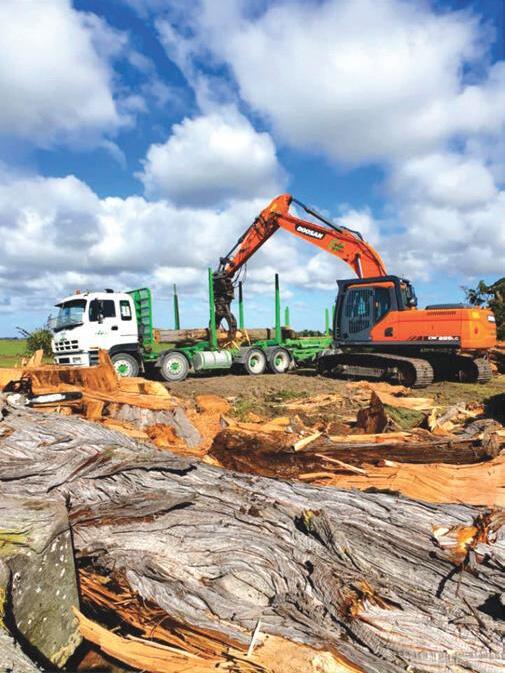
players in the game are working hard to regain credibility, trustworthiness, and consistency. These are core values the New Zealand forestry sector can certainly work with.
At present, the combination of India selling prices and shipping costs netted back to the New Zealand wharf gate, is resulting in slightly better bottom line than China. Most commentators are suggesting small lifts in China in October should see the two markets neck and neck.
In the critically important China market, it is good to see log inventory falling slightly to 3.4million m3 compared to 3.7mil in August. The primary reason is a lift in daily off port sales from 47,000 last month to close to 60,000 m3 per day.
It is fantastic to see shipping rates falling with ample availability of Loggers opening on the Southern Hemisphere appearing to be the primary reason.
Whilst US$2-3 per cubic metre drops for October fixtures seem to be the order of the day, the international Baltic Dry index (BDI) is on the rise reflecting increased hire rates in larger class vessels. The expectation is the recent drops in smaller loggers may not be around for long.
In the broader China economy context, recent interest rate drops and easing access to new house loans has not this far provided stimulus. Overall Inflation remains very low at 0.6%.
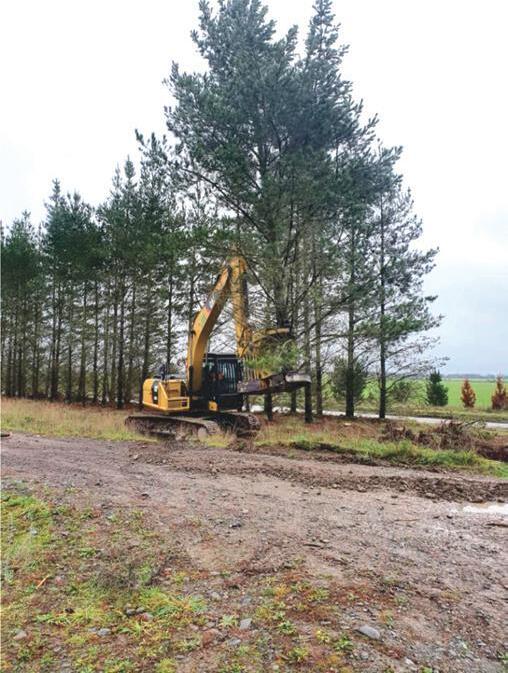
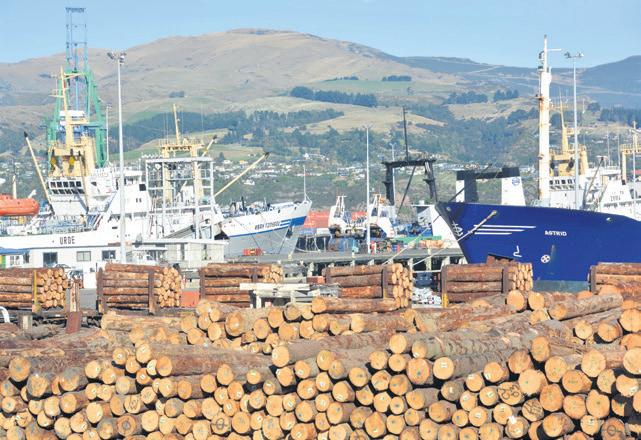
Indeed, the broader commentary is suggesting China is continuing to languish in poor broader activity numbers. In Q1, Chinese exports were up 9% but imports were well down reflecting poor domestic demand. Unemployment is up and the economy supposedly struggling otherwise.
Despite the above being close to a cut and paste of some commentary, as I have highlighted, current daily softwood log consumption is running along at 60,000 m3 across the eastern seaboard. China sawmills mostly run a six-day week and some work on their day off.
That translates to 1.5mil–1.6mil m3 of softwood logs being consumed every month and 80-85% of that comes from NZ. That uti-
lisation reflects 300-320 logging crews in New Zealand or 2,500+ New Zealanders in good work and that is just directly in harvesting and transport.
I would suggest the China economy is what it is, and we better get used to a market which is operating at historically lower numbers but is now steady as she goes whilst being hugely important to every New Zealand forest grower. My oft commented importance of our domestic sawmills remains a fundamental to most harvest operations. Recent reported numbers suggest there are in excess of 25,000 Kiwis that earn their daily crust from working directly across the forest industry supply chain.
Add in the service and support industries, you can probably double that. Thus, you have a land use in New Zealand vital to our economy as our third largest export earner and a land use that has it foundations centred on sustainability.
As always, please remember the thoroughly important message, “despite the challenges, it remains, as always, fundamentally important, the only way forward for climate, country and the planet, is to get out there and plant more trees”.


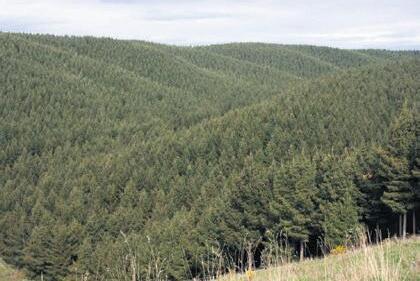


The ‘Why Pines?’ report recently released by the Our Land and Water National Science Challenge should serve as a major wake-up call for the Government according to Federated Farmers.
Article supplied by
] Federated Farmers
“It may have been published as a report, but it reads more like a horror story for New Zealand’s farmers and rural communities,” Federated Farmers meat and wool chair Toby Williams said.
“The study makes it very clear that under the current policy settings we will continue to see millions of hectares of productive farmland plastered in plantation pine trees.
“Planting pine trees as far as the eye can see may well help reduce emissions or improve water quality, but somebody has to ask the question – at what cost?


“I can tell you; it will come at the expense of rural communities, food production, the economy, and our native biodiversity.
“There simply has to be a better way.”
Williams said the Our Land and Water National Science Challenge report shows that meeting the current freshwater bottom lines will require widespread land use change from farming to forestry.
“One of the studies found that even if there was no carbon price, one fifth of sheep and beef country would still need to be converted to pine forest to meet freshwater goals,” Williams said.
“This must be of huge concern to the Government, who scrapped the failed He Waka Eke Noa pricing programme because it was go-


ing to have the exact same effect.”
He said fixing New Zealand’s unworkable freshwater rules and rethinking our ETS forestry settings were both included in Federated Farmers’ list of policy priorities for restoring farmer confidence.
“While the Government has done lots of good things to restore farmer confidence, unfortunately the Labour Government’s freshwater bottom lines remain on the books.
“These rules are completely unrealistic and unworkable. Federated Farmers have consistently called for them to be scrapped, with a new focus put on replacing the broken RMA system.

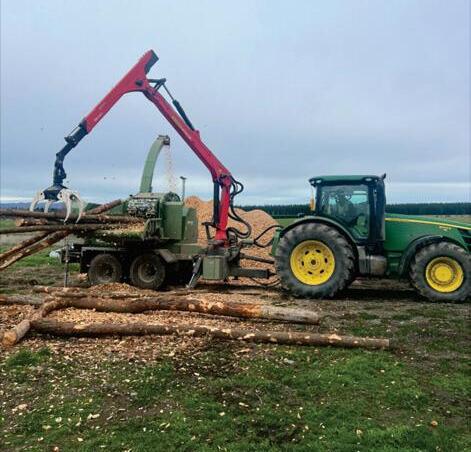
Covered: Federated Farmers meat and wool chair toby Williams says a new report shows that millions of hectares of productive farmland will be covered in plantation
“If the Government want farmers to increase the value of our exports and adapt to changing conditions, we need to be able to change our land use as opportunities pop up.
“Unfortunately, under the current system, every time a farmer tries to do something different on their land they’re met with nothing but red tape and expensive consenting costs.
“Our current environmental policy framework is completely broken. The Government needs to work at pace to urgently repeal unworkable freshwater bottom lines and replace the RMA.”
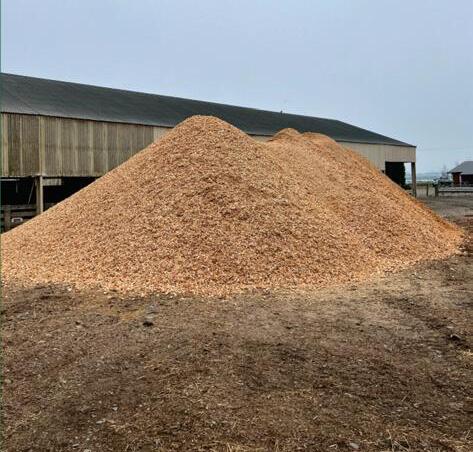

Right now on dairy farms around the country farmers are managing feed, animals, budgets, machinery, and the weather. They’re also having conversations with their bankers and insurers, and finding time for their kids.
] by Jim van der Poel
] DairyNZ chair
That is just life for farming families, and everyone has to balance their own challenges.
In the background for farmers as with other industries are pending political cycles. These can bring changes to regulation, uncertainty while policy is decided upon, and a disconnect between national and local level while decisions are made.
And to paraphrase Nuffield Scholar Kylie Leonard, it’s best for farmers to be at the table, rather than on the menu.
DairyNZ is an industry-good organisation, representing all 10,600 dairy farmers. Our duty is to help keep them and their farming businesses moving forward.
In the past nine months of a changed government, we’ve seen several policy changes begin to roll out around methane targets, ag out of the ETS, further reform of the RMA, and the beginnings of a new pastoral sector group.
Much of this we’ve advocated for on behalf of farmers, and we welcome particularly in a time of high inflation and input costs. It is our job to keep engaging, and we do so with information that is supported by world-class scientists and farm system expertise.
We are submitting on behalf of farmers in regard to climate targets and emissions reduction plans, immigration and workforce development, the biosecurity act and freshwater standards.
We are following closely impending government changes to genetic technology regulation.
We do what we can to help get bipartisan support for regulations that are logical and support good farming practices. Hopefully then we can bed down those rules and not have them disrupted every few years.
DairyNZ has 17 years of science and research to specifically benefit dairy farmers. It is important we share our knowledge with decision-makers to ground policy in reality.
Much of our knowledge aligns with the realities of the global market, which is changing the way we farm.
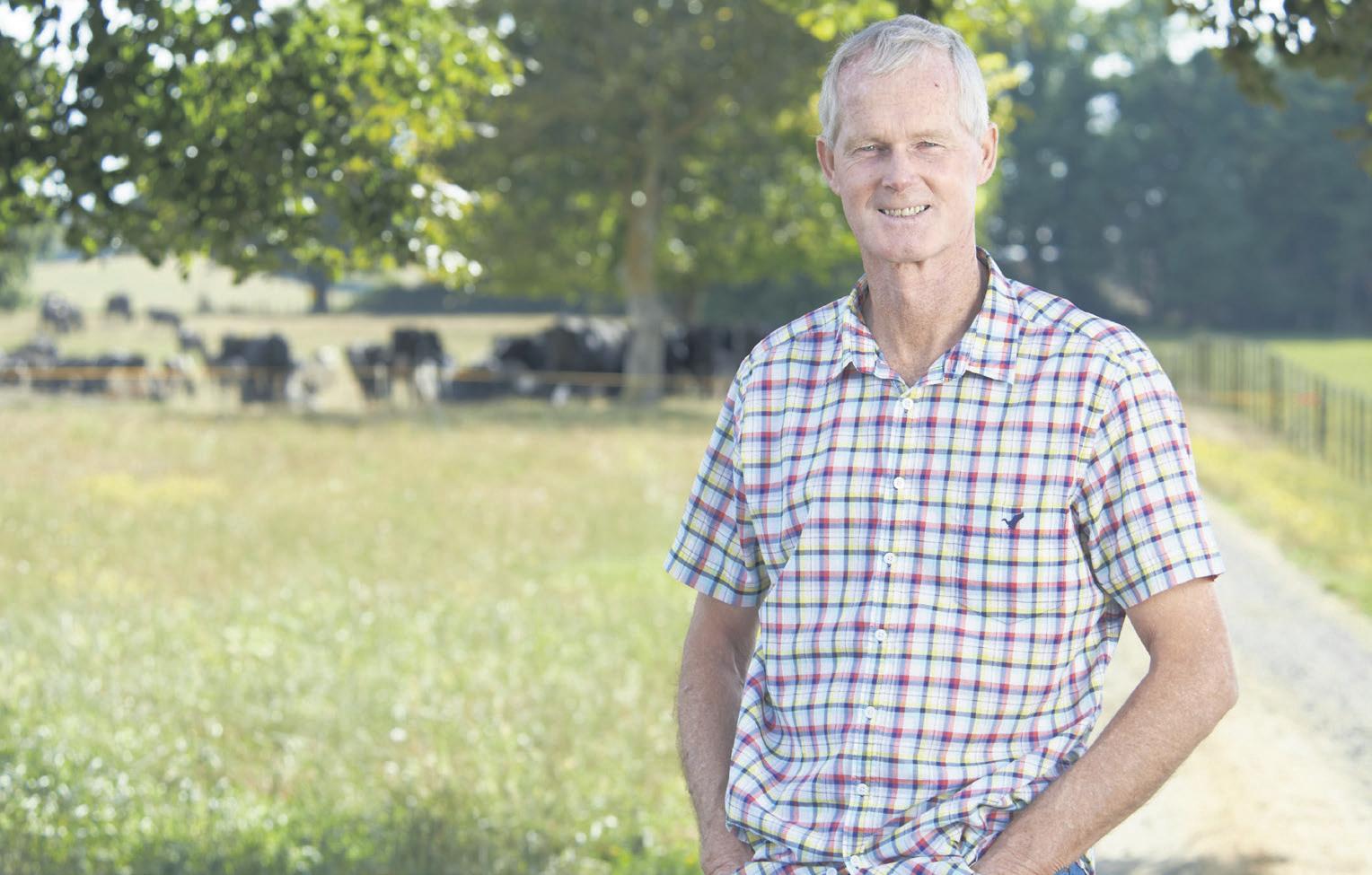
Just recently at the Primary Industries NZ Summit we heard from Rabobank that 80% of Zealand’s exports are destined for countries with mandatory climate-related disclosures either in force or on the way.
New Zealand dairy farmers have always innovated and will continue to do so. This is the basis of New Zealand’s prosperity and today we stand proud as an internationally competitive dairy farming nation.
We produce over 20 billion litres of milk a year and bring in $25 billion in export revenue. Dairy employs 55,000 people and last year accounted for about 36% of all New Zealand’s goods exports.
New Zealand dairy farmers have a sol-
id reputation as producers of safe, lowemissions, high-quality milk who uphold the highest standards of care for animals and environment.
The success of dairy underpins the success of the New Zealand economy and the wellbeing of New Zealanders.
At the end of the day farmers and politicians surely have a similar end goal – a prosperous, safe, secure country and strong links to the outside world.
It’s good to be at the table so that on behalf of our farmers we can chart a more enduring course for sustainable growth. Because at the end of the day, when dairy does well, New Zealand does well.

‘At the end of the day farmers and politicians surely have a similar end goal – a prosperous, safe, secure country and strong links to the outside world.














Their failure provides fuel for those opposed to dairying in any form, and that’s a shame because the industry provides food, employment, significant income, and when done well it is the quickest way to sequester carbon.
To those new to the district the contour of the land appears ideal for intensive dairy.
The wind-blown soils have a seemingly ideal gentle rolling contour. Dairy cows walk a long way each day and gradual slopes require less energy compared to steeper land.
The low natural rainfall has played an important role in the retention of nutrient and soil tests show the best of the country to have naturally high phosphorus, calcium, potassium, and magnesium levels reducing the requirement for expensive inputs.
The demand for a continuous supply of pasture means irrigation is essential and there’s a plentiful supply under most of the country.
Land locally remains relatively cheap com-
pared to other intensive dairy areas so why did these enterprises run into difficulties?
There are several issues that may have contributed and are worth discussing as they have implications for similar operations elsewhere.
The two farms are located on soils that are quite sticky limiting the speed at which water can percolate downwards, and pugging is common under the downward pressure of large numbers of animals confined to small areas.
Soil compresses under feet and when it doesn’t quickly regain a structure with close to the ideal 25% air space, pasture production declines.
It’s the organic matter in soil that largely determines the amount of nutrient and moisture soils can retain and when synthetic nitrogen is regularly applied the speed at which organic matter is sequestered is compromised.

Surface run-off increases and the conditions for a lift in both nitrate and phosphorus levels in waterways are created although there is no evidence that this did occur on the properties mentioned.
Studies have shown that when nitrogen is fixed naturally by clover, rather than supplied in the synthetic form, the loss of nitrate to groundwater is minimised.
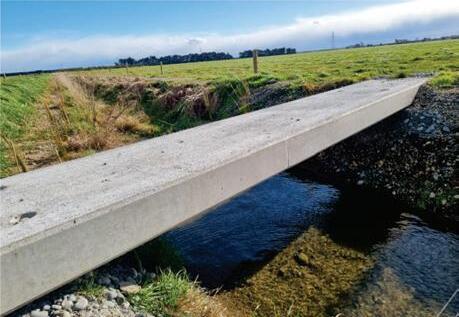


Functional Fertiliser has products that when incorporated into total nutrient programmes increase clover growth and total annual pasture production.
To maximise the benefits careful daily management of pasture is essential and there are tech sheets available that provide







the information and techniques necessary for best results.
It’s not new information and was part of what farmers learnt prior to 1990 when there was still a reliance on clover for the supply of nitrogen.
A change doesn’t mean a reduction in annual pasture production as data from Ruakura Research Station showed permanent pasture production in the Waikato area higher in the 1980s than it is today.
For more info talk to Peter on 0800 843 809.

















With all that’s going on in the deer industry at present, members of the Deer Industry NZ (DINZ) board and the NZ Deer Farmers’ Association (NZDFA) Executive Committee, along with the DINZ CEO and staff, attended a Q&A session in Feilding on 17 September, hosted by the Central Region branch of the NZDFA.
The event had between 50 and60 farmers in attendance, with most from the lower North Island but some from further afield. The DINZ team provided updates on velvet market access to China and venison markets going forward, including the North America Retail Accelerator (NARA) project.
Farmers will be pleased to hear that significant progress is being made toward restoring access for New Zealand frozen deer velvet into the Chinese market. The negotiations have been thorough, and recent interactions with Chinese authorities have been encouraging, with agreement reached on the text of the new arrangement.
MPI has issued an FYI advising the export certificate templates and establishment lists are being updated to enable exports to resume and will advise implementation dates once agreed with China.
MPI is undertaking this work with urgency so that an export pathway is available for frozen velvet at the start of the upcoming 2024/25 season, in time for when normal exports would start.
There’s confidence within the industry that we will see the resumption of exports to China for the upcoming season. Demand for high-quality New Zealand deer velvet remains
strong, and securing stable, long-term partnerships is a priority. This will benefit farmers through consistent demand and steady pricing.
Onto venison now, and chilled prices seem to be slightly better than last season. Our marketing companies are working carefully to secure the best prices, with less product from smaller herd numbers.
Some of our companies are still out travelling, securing contracts and ensuring relationships with their current customers remain strong. AgriHQ is reporting our schedule prices are sitting at $9.38/kg, with contracts from companies ranging up to around $10.50/kg for the chilled season
Our chefs have been busy travelling, doing amazing work across Europe and the US.
DINZ’s Europe-based chef Shannon Campbell is currently in the US working with several different import companies that work closely with our five NZ venison companies. Some of the work is aimed at food service but a lot of it aligns with the NARA project and its focus on the retail market.
DINZ executive chef Graham Brown has just returned to New Zealand after spending a week in Sweden helping Mountain River showcase a few target cuts for the upcoming season.
At times, he had two events in a day, and

the feedback was so positive, enquiries have already come in to book him in to do it all again next year.
Our five venison companies are working towards the first milestone of the North American Retail Accelerator project, which is due 1 October. With all administrative work now in place, we are starting to hear great ideas and see exciting activities being implemented.
Finally, Deer Industry NZ would like to give our condolences to the Guild family upon the passing of James Guild earlier this month. James was a true leader in every sense of the word for the deer industry, always generous with his time and access to High Peak Station for visiting dignitaries and deer industry field days alike.
Access: Progress is being made toward restoring access for New Zealand frozen deer velvet into the Chinese market.
“I knew James for over 40 years,” says DINZ Board Chair Paddy Boyd, “going right back to the live capture days.
“We would often stop in at High Peak in those early days, and so our conversations were mostly about how to farm deer in the best way possible.
“James was hugely curious and was always looking to learn how to better farm at the highest level.
“He cared deeply about the deer industry. Even in the last stages of his life, he would still call me up to talk about the industry, its future in changing times and the need to move along with them.
“He was a pioneer, a leader, and was just so passionate about deer and farming. A really genuine guy. He will be missed.”

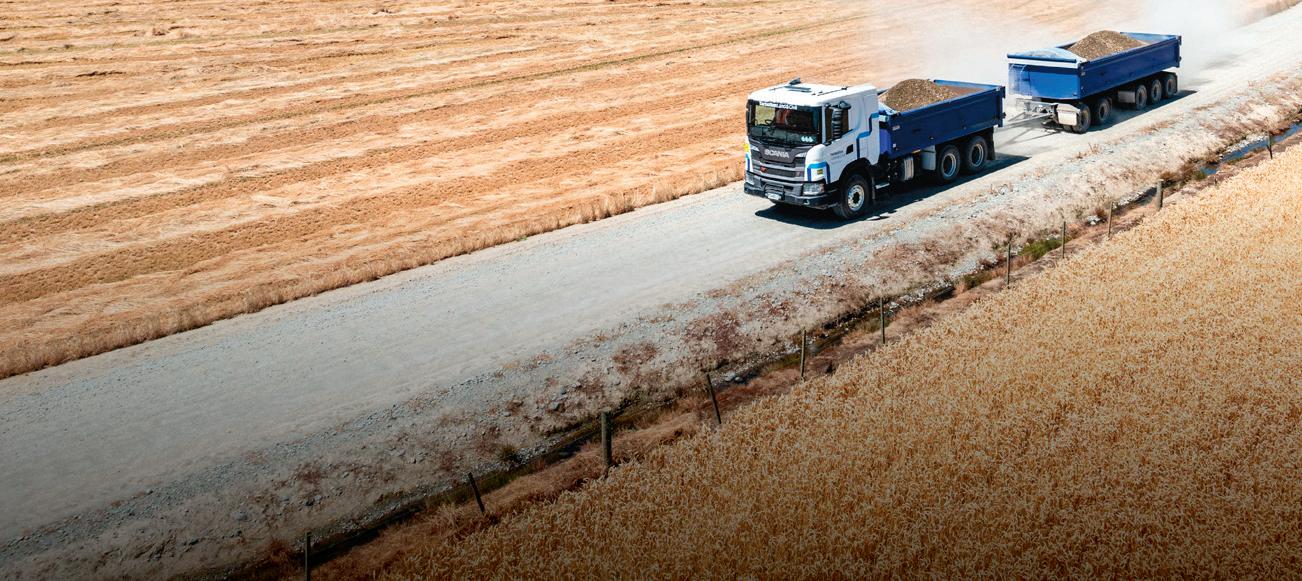
We’ve been getting things Done Right for decades by always stepping up to the plate and getting it right the first time, every time. Get in touch today and get the job Done Right.




] by Nicky Hyslop
Beef + Lamb New Zealand Director
Central South Island
Beef prices remain positive and if the significant decrease in lamb processing in Australia continues, that coupled with less expected supply from New Zealand, the EU and UK, could see global lamb prices lift higher than forecast.
Interest rates are easing and the mediumterm outlook for red meat exports remains strong. However, it is still necessary to keep a lid on farm spending as the positives will take time to trickle through.
We have recently wrapped up our B+LNZ Director Roadshow and it was a really positive exercise. We met with over 400 farmers and our refreshed strategy, which brings the focus back behind the farm gate, resonated with those attending.
Spring brings with it green shoots, both literally and metaphorically. Beef + Lamb New Zealand’s recent New Season Outlook report for 2024-25 highlights that while the profitability forecast for this coming year is sobering, there are a number of factors that could result in a more rapid economic recovery.
They were particularly supportive of the farm extension work and on-farm focus which will help farmers lift productivity and profitability.
This is in line with the Government’s ambitious goal to double exports by 2030. While we’re going to be constrained on the production side, over the past three decades we’ve continued to produce more from less and we’ll continue to work hard on market access to provide opportunities for our meat processors.
We have welcomed changes to Government regulations that might have hamstrung our ability to lift productivity, but this doesn’t mean we should throw the baby out with the bathwater.
Environmental issues have not gone away but we have existing farm plans that should provide assurance and enable us to demonstrate that our farming practices are sustainable. We need to show that we are all working to protect our natural resources and reduce our greenhouse gas emissions.
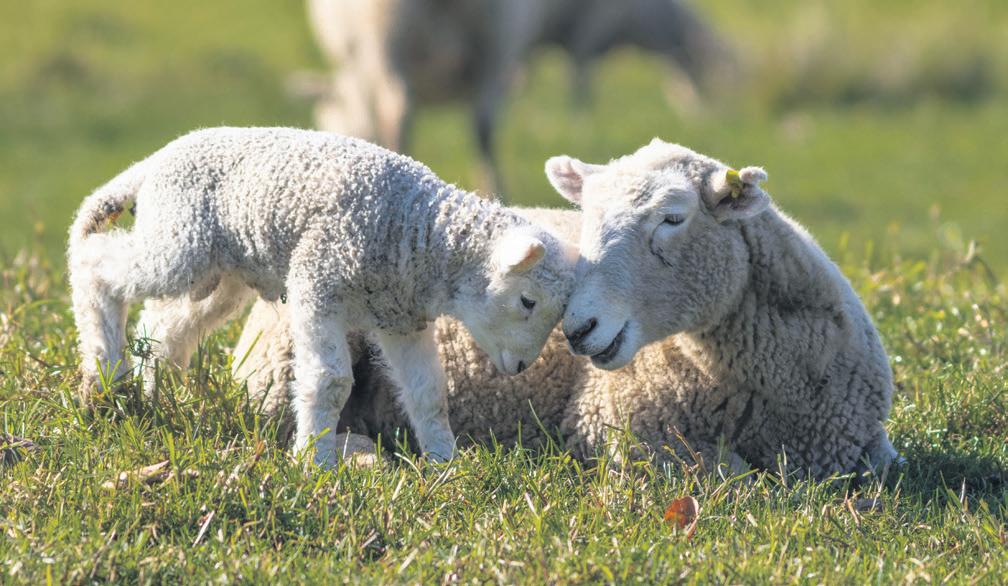
B+LNZ is working hard to ensure any regulatory farm plan framework not only provides assurance but is cost-effective and genuinely useful on-farm.
International market access is becoming increasingly dependent on our ability to demonstrate our sustainability credentials.
This puts the onus on farmers to provide evidence of their nature positive farm systems through programmes such as the New Zealand Farm Assurance Programme.
Farmer-driven Community Catchment Groups are a powerful tool for helping communities identify the environmental challeng-
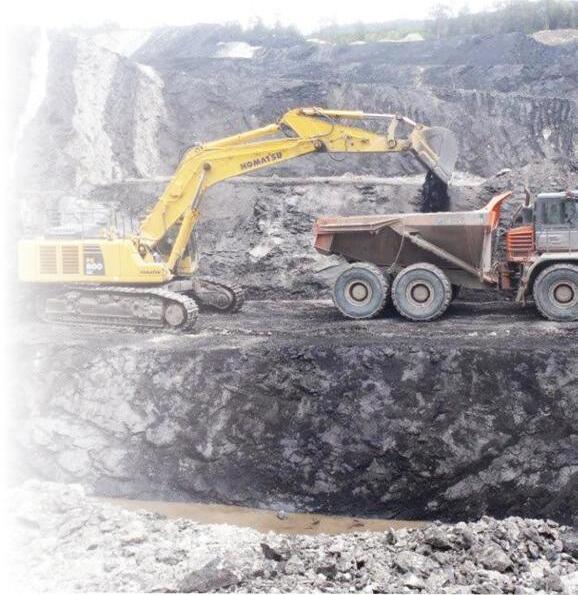

es specific to them and put actions in place to collectively address them. These actions also become part of our farm plans.
Across the country, we are seeing significant improvements in water quality, native biodiversity and soil protection because farmers and communities have taken ownership of their issues and driven change.
While the spring sunshine and grass does make us feel better, times are still tough for sheep and beef farmers.
We are all busy, but a quick phone call to check in on your neighbour can be worth so much for both parties.





















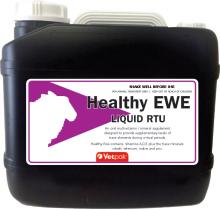

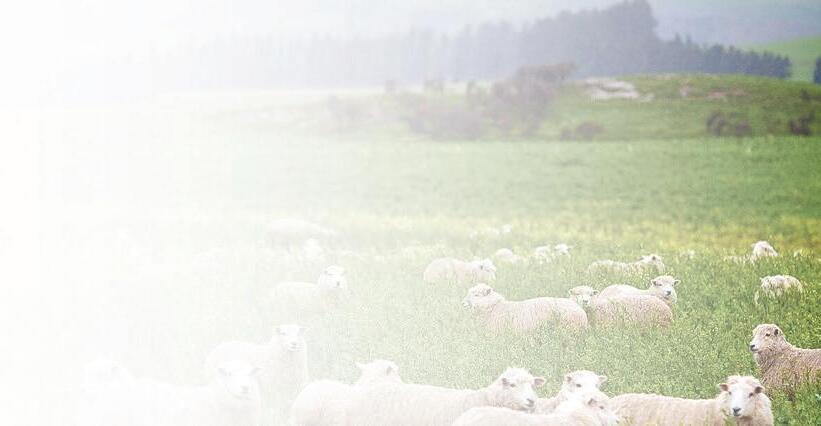







An ancient hospital order called The Order of St Lazarus and a Christchurch plant nursery Ouruhia have literally donated an educational tool to the children in Kaiapoi.
The two organisations heard of the Food Forest, a park in the red zoned part of the town to help teach children, and in some cases adults, about how to grow fruit trees and consumable plants.
Input from Ouruhia was a given, owner Dean Macann wanted to grow awareness of fruit trees and donating trees was an obvious method of doing that.
The Order of St Lazarus input is a little more complicated. The Order was first set up on 1098 in Jerusalem by members who wanted to look after the lepers and those suffering outside the holy city. St John was set up at the same time to look after those within the walls.
With the fall of Jerusalem and Acre, the Order withdrew to France where they built a network of hospitals. The Order still exists all over the world looking after those who are less fortunate.
With that in mind, and their strong links to the time of the crusades in the holy land it was decided to join forces and donate 35 trees.
Not surprisingly, they are trees that grew in the Jerusalen area at the time of the Crusades.
Food Forest now has a variety of olive, citrus and fig trees which can be used in educating people on the history of trees going back 2000 years.


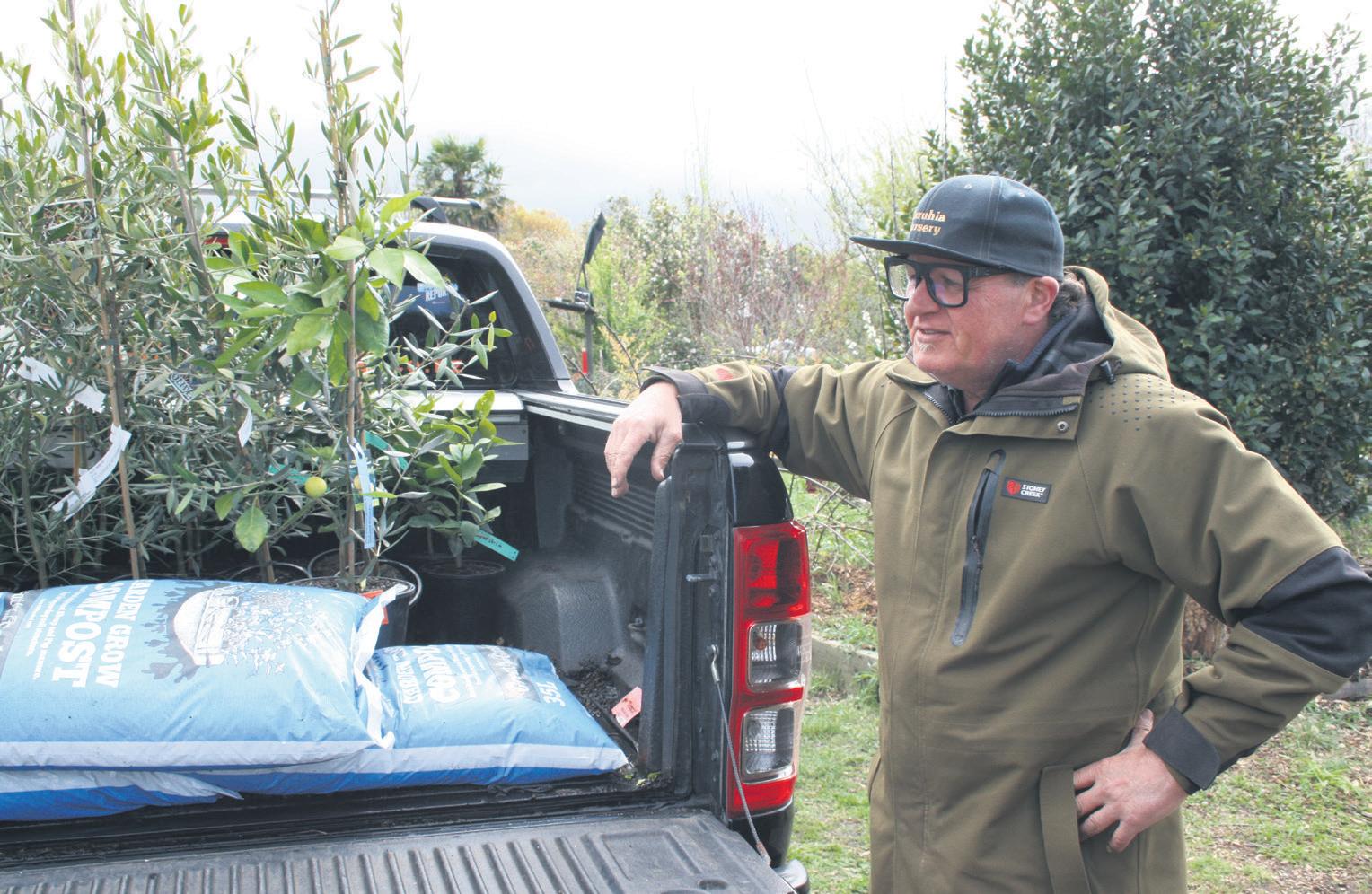
Throughout a lifetime one will see just a couple of things that stay burned in our memory for the length of our days. Extraordinary events, recognised at the moment they were seen, not years later on reflection.
Back in the caveman days they would probably be chalked up to an act of the gods. In modern times our knowledge of how everything works enables us to attribute the cause to more likely factors.
The following may be one such event. It relates to the perceived value of oil. Brent Crude to be precise, presently hovering around seventy to eighty US dollars per barrel which is about seventy to eighty cents per litre in New Zealand dollars.
Not much when you think of it like that. Brent Crude sets the price standard for about two thirds of global oil production.
For the first time in history, the paper market for Brent Crude is net short. The paper market is a simulated trading environment for this product.
In essence, this means that more investors are betting that the oil price will fall than there are betting that it will rise.
Apparently, this amount of pessimism in the market is unusual. But in itself this is not remarkable.
What makes it remarkable is the fact that physical oil inventories, globally, are declining at about a million barrels per day.
Both the International Energy Agency and the US Energy Information Administration
note this decline and expect it to continue into the first quarter of 2025.
There is a lot of inventory. At this rate, it would be fully exhausted in about a year and a half. Inventory is important for national energy security so those holding it will become reluctant to share it long before it really drops low globally.
This situation is remarkable because a critical resource is currently depleting, yet traders are betting that its price declines. This is perfectly contrary to the fundamental economic premise of supply and demand.
Why does the paper trade not reflect confidence in a price rise resulting from inventory decline? Maybe the decline rate is too small relative to inventory? We will see in time.
To replenish inventory will require major investment in fossil fuel development. A prickly subject if we are to believe and realise remedies to global warming.
As the global economy shifts toward degrowth long standing economic theories such as supply and demand, even for a critical resource that drives that economy, will shows signs of becoming confused.
Our economic system works fine when the economy is growing but is less dependable when growth goes into reverse.

A good way to support this transition to long periods of less or even negative growth would be to put more decision-making emphasis on the resources that drive the economy instead of the money they enable us to create.
The full shift to degrowth is likely to take a couple decades to be clearly visible, it needs a lot of hindsight.
Even so, the state of the paper trade for brent crude suggests the inflection point, the peak, may now be behind us.
This is indeed an extraordinary moment. The usual economics that underpin leadership decisions will become less dependable. There are solutions.
Will we work them out?
‘For the first time in history, the paper market for Brent Crude is net short. In essence more investors are betting that the oil price will fall than there are betting that it will rise.




